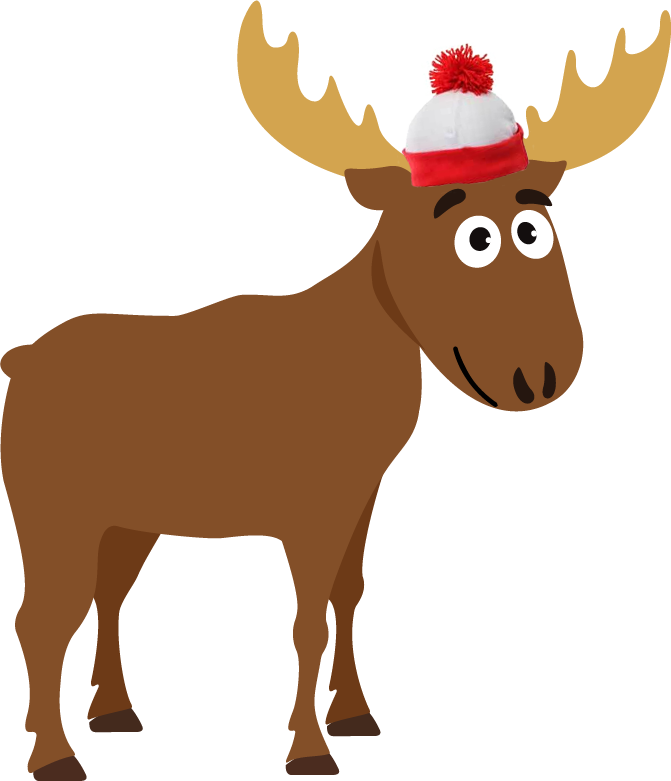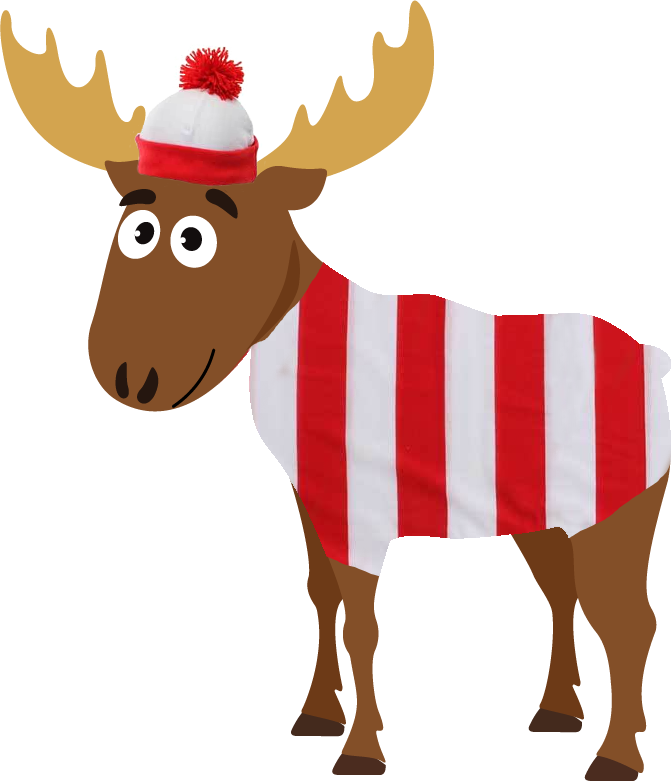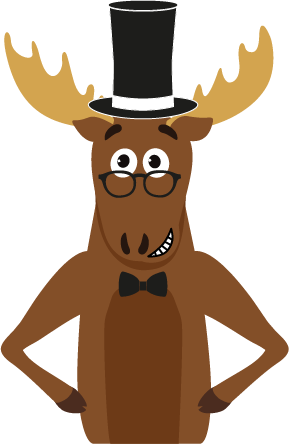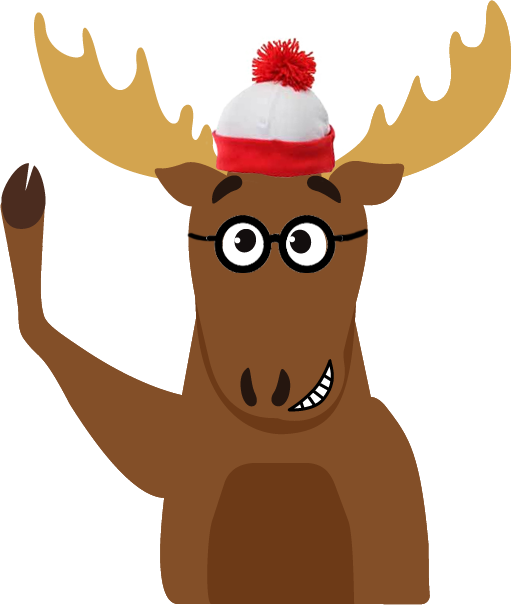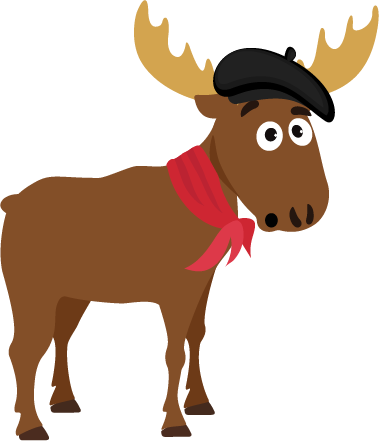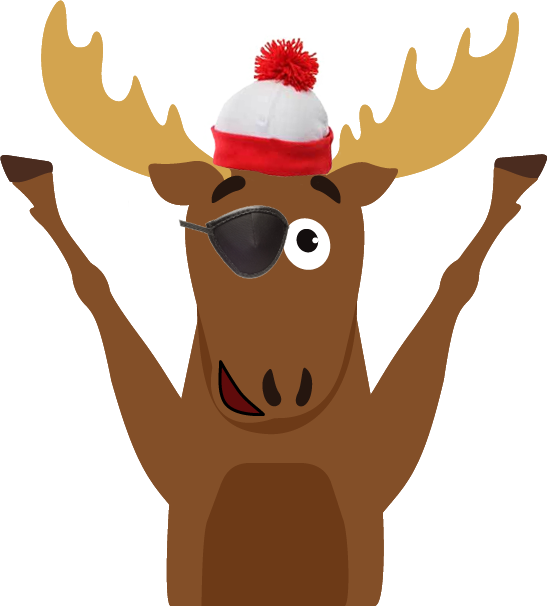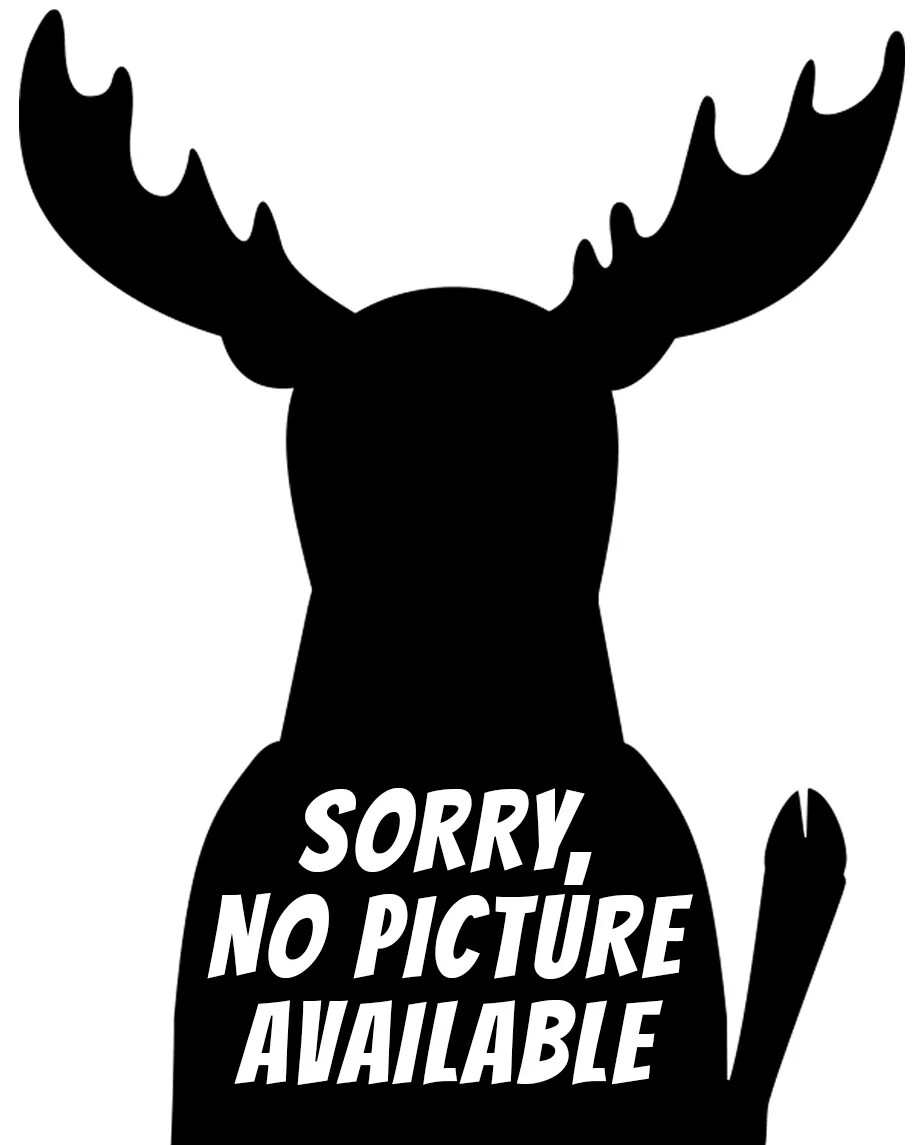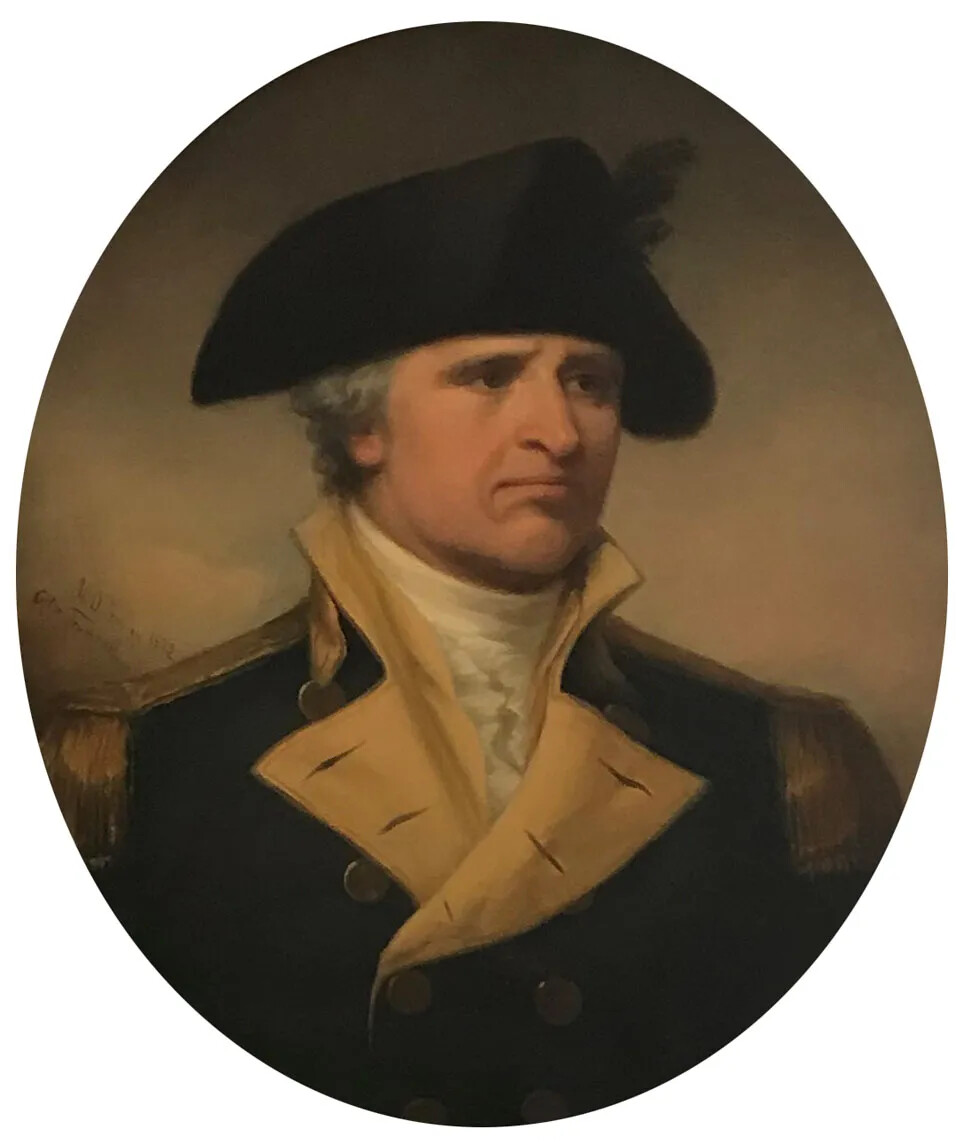What was New Hampshire like 300 years ago? New Hampshire was a British colony at that time. In fact, it was one of several British colonies in North America that were located along the east coast. The English settlers who had arrived in New Hampshire by 1720 all lived in the southeast corner of New Hampshire, near the seacoast. The biggest settlement in New Hampshire was Portsmouth, which was the colony’s capital.
In 1720, New Hampshire had miles and miles of forests, lakes, and rivers where hardly anyone lived. But New Hampshire was just about to grow a lot bigger. Thousands of people came to New Hampshire in the 18th century, and they settled new towns all over the colony. Most of those towns still exist today.
As New Hampshire’s population grew larger, it became more diverse. People from different cultures and different countries came here to settle and build new lives. They joined the Abenaki, who had lived in New Hampshire for thousands of years, and the English settlers who came in the 1600s and early 1700s.
As you learn about New Hampshire in this period, think about the following questions:
- How did towns develop throughout New Hampshire during this time?
- How was New Hampshire connected to other colonies, countries, and continents in the 18th century?
- PORTSMOUTH, NH'S COLONIAL CAPITAL
- BLACK AMERICANS IN NH
- SCOTS-IRISH COME TO NH
- MORE NH SETTLEMENTS
- FRENCH AND INDIAN WAR
Portsmouth, New Hampshire's Colonial Capital
How did Portsmouth become the capital of New Hampshire in the 18th century?
Portsmouth was the largest settlement in New Hampshire during the colonial period. It is located on the seacoast near the border with Maine. Portsmouth has a deep harbor, and it lies at the mouth of the Piscataquog River.
In 1720, more than 1,000 people lived in Portsmouth, most of them in houses that were close together. There were lots of streets in Portsmouth, and in the center of the town was a meeting place called Market Square. Portsmouth had many shops where goods like clothing and household items were sold. There were taverns and inns for the travelers who came to Portsmouth.
There was also a busy dockyard with lots of ships that sailed to other American ports and to Europe, Africa, and the West Indies. Near the dockyard were warehouses that stored things to be shipped someplace else or to be moved further inland to other towns and communities in New Hampshire.
Portsmouth was a busy place during the 18th century, with lots of people coming and going.
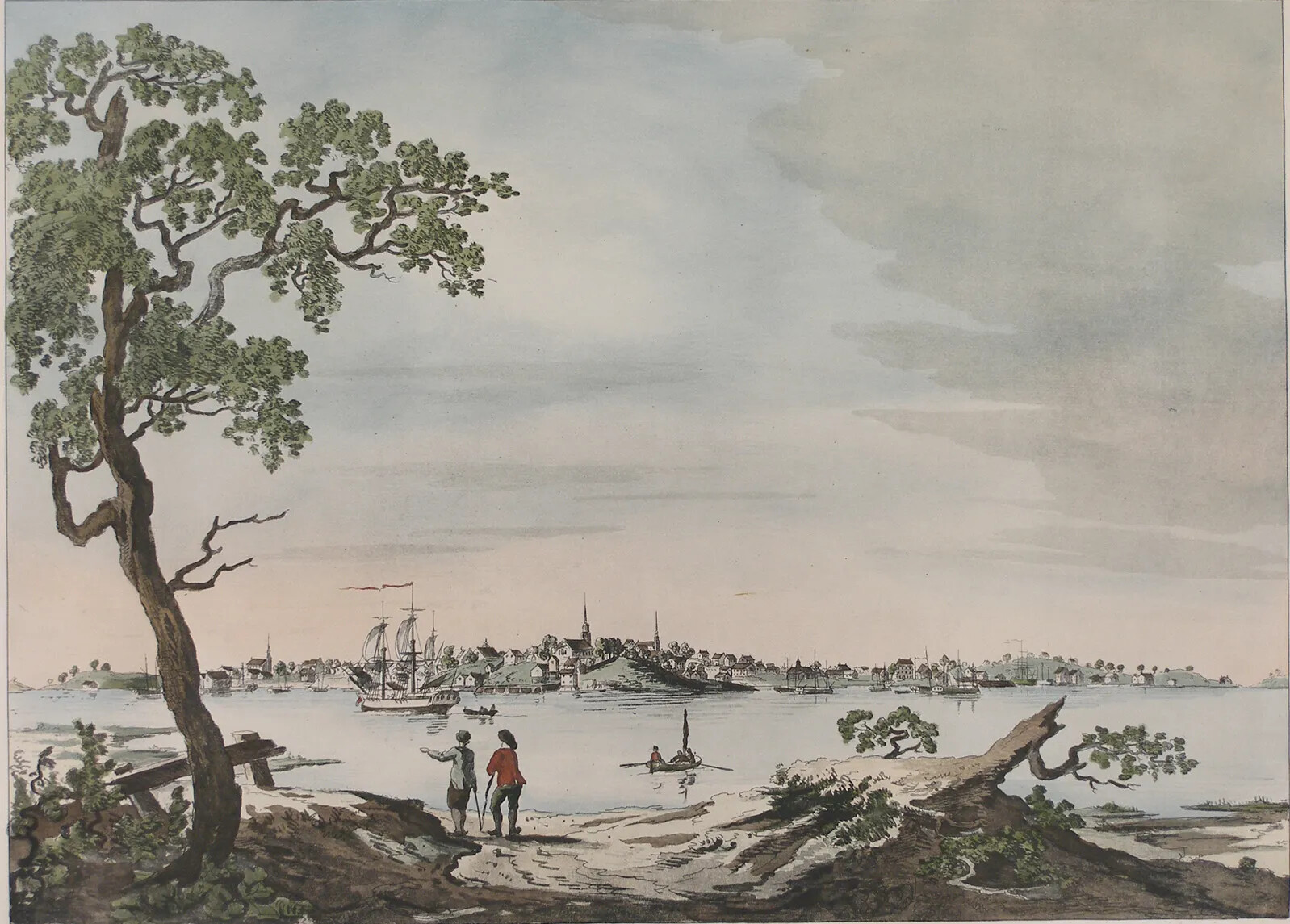
Caption:
This painting is a view of Portsmouth across the Piscataqua River during the time of the American Revolution.How did Portsmouth trade goods with other parts of the world?
Many of the people who lived in Portsmouth were merchants. They bought natural resources from people living further inland and then shipped those items to people living in other places where they needed those natural resources. This exchange of goods is called trade.
Some merchants traded with people in other parts of America, like Boston or New York. Other merchants traded with people who lived far away in Europe, Africa, or the West Indies. During the colonial period, New Hampshire had three important natural resources that people in other places wanted to buy: fish, fur, and forests.
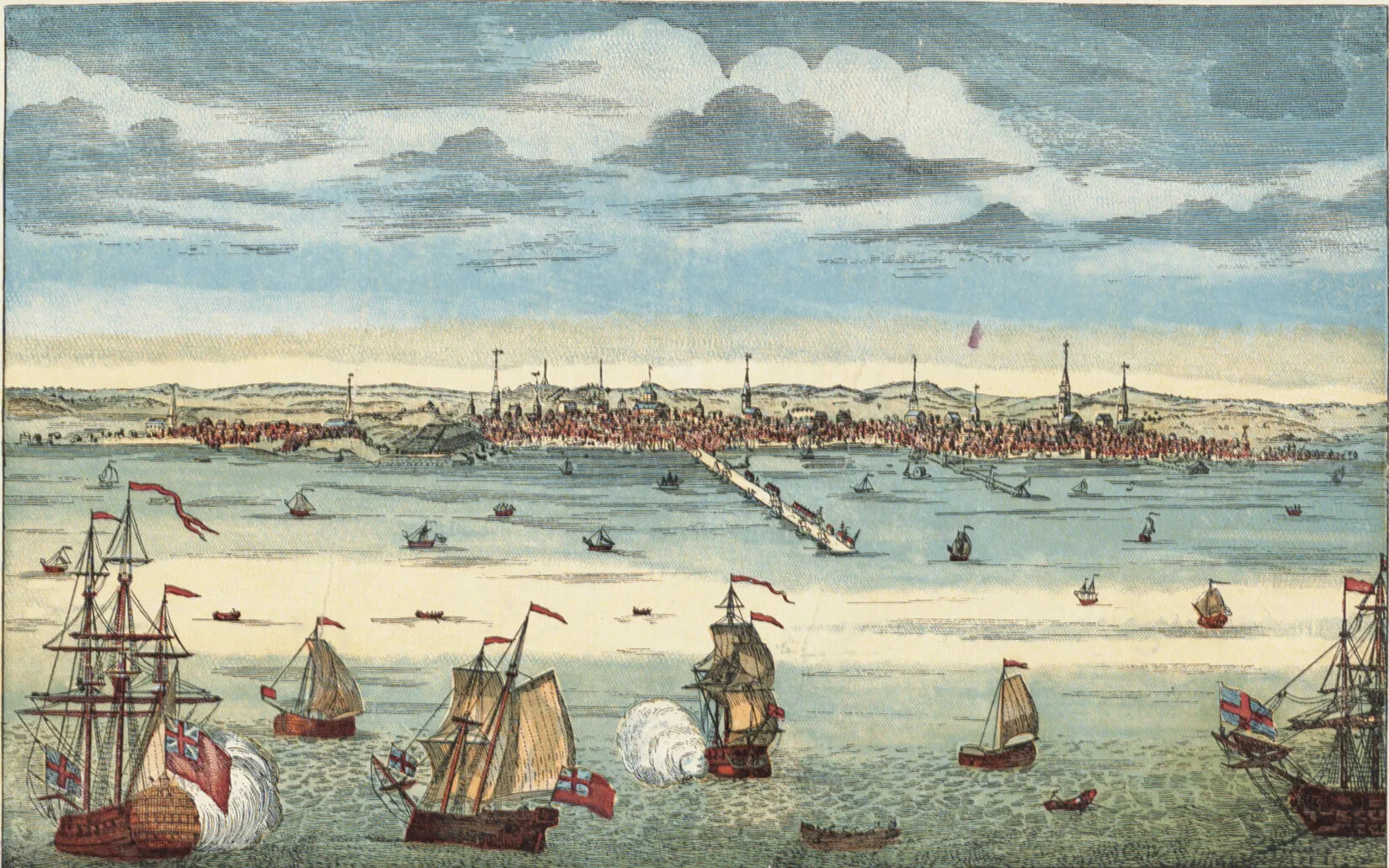
Caption:
This busy harbor scene shows Boston, Massachusetts in the early 1700s. Lots of ships are sailing in and out of port, bringing products in from other parts of America, like New York or Philadelphia, or places farther away like Europe, Africa, or the West Indies. The ships also bring natural resources, like fish, fur, and forests, out. Merchants bought these natural resources from people living further inland and then shipped them to people living in other places. This exchange of goods is called trade, and it made a very comfortable living for colonial merchants. Although this is a picture of Boston, Portsmouth would have looked very similar.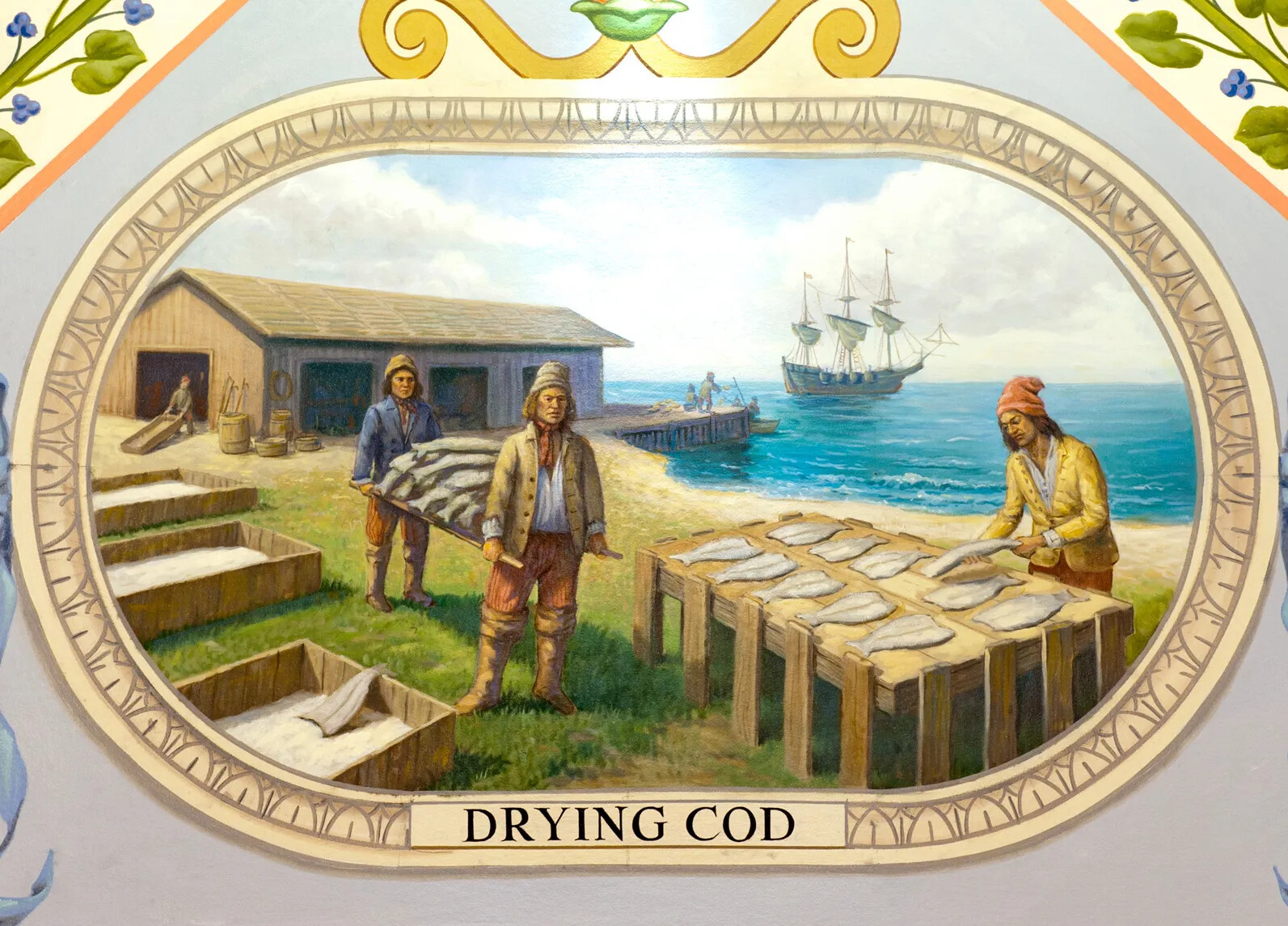
Caption:
There were no refrigerators or freezers in the 1600s and 1700s. So fishermen had to preserve the codfish they caught before they shipped it back to England. They would salt it and lay it out in the sun to dry. This kept the fish from spoiling on the journey across the Atlantic Ocean. Cod was an important trade item because it was a popular food in England. This painting is part of a mural that hangs in one of the hallways of the U.S. Capitol building in Washington, DC.Fish
The fish came from the ocean. There were millions of fish living in the Atlantic Ocean off the coast of New Hampshire. Fishermen caught them using giant nets. Once they brought the fish onshore, the fishermen dried the fish in the sun so they wouldn’t become rotten. This process preserved the fish. After the fish were preserved, merchants sent the fish to Europe, where they fed millions of people.
Fur
The fur came from beavers who once lived all over New Hampshire. Beavers have beautiful, soft fur that keeps them warm in winter. Wearing beaver fur or pelts became very popular in Europe in the 1600s and 1700s. Trappers in New Hampshire caught beavers for their fur and then sold the fur to merchants. Merchants shipped the fur to Europe where people used it to make hats and coats. New Hampshire once had millions of beavers, but the trappers caught so many of them that beavers almost disappeared from the area.
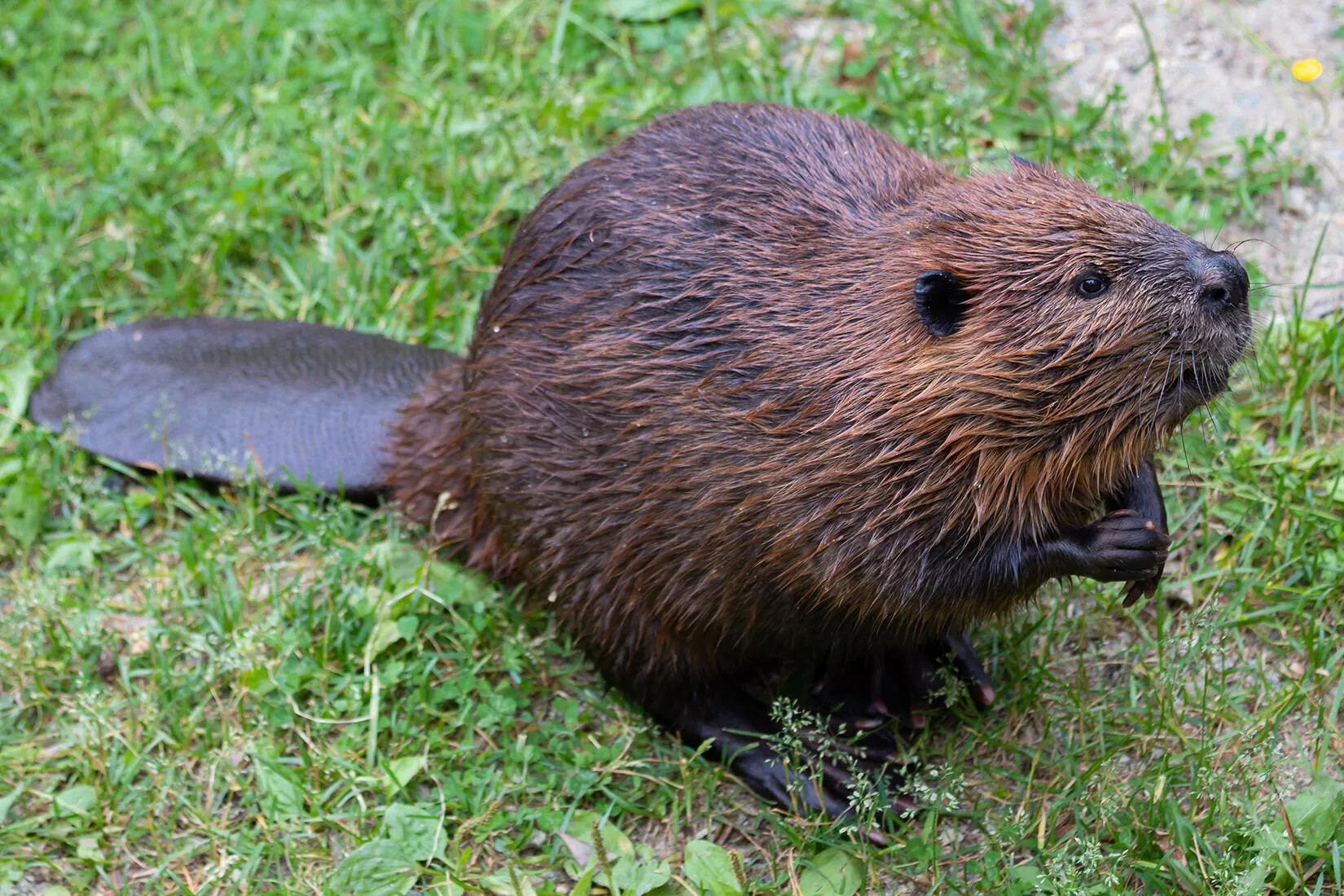
Caption:
Beavers are mammals that live all over North America. They live on land but like wet environments, so they can be found in New Hampshire's wetlands. The Abenaki hunted beavers and used the pelts for clothing and blankets. When Europeans came to New Hampshire, they traded with the Abenaki for beaver pelts and hunted beavers themselves. Beavers were hunted so much that they almost became extinct, but now they are plentiful in New Hampshire again.Forests
The forests came from the thousands of trees that were in New Hampshire. Lumbermen cut down many of these trees, chopped them into timber, and then shipped the timber to other parts of America and to Europe. People used the wood to build houses and barns, to make things like barrels, boxes, and wagons, and to burn in their fireplaces to help cook food and keep warm.
The British government kept the tallest trees in New Hampshire to use as masts for ships in the navy. Masts hold up the sails on big ships. As the British navy built more ships, they needed lots of mast trees. New Hampshire’s tall white pines supplied many mast trees to the British navy in the 18th century. Almost all of the tall white pine trees were cut down in New Hampshire during this period.
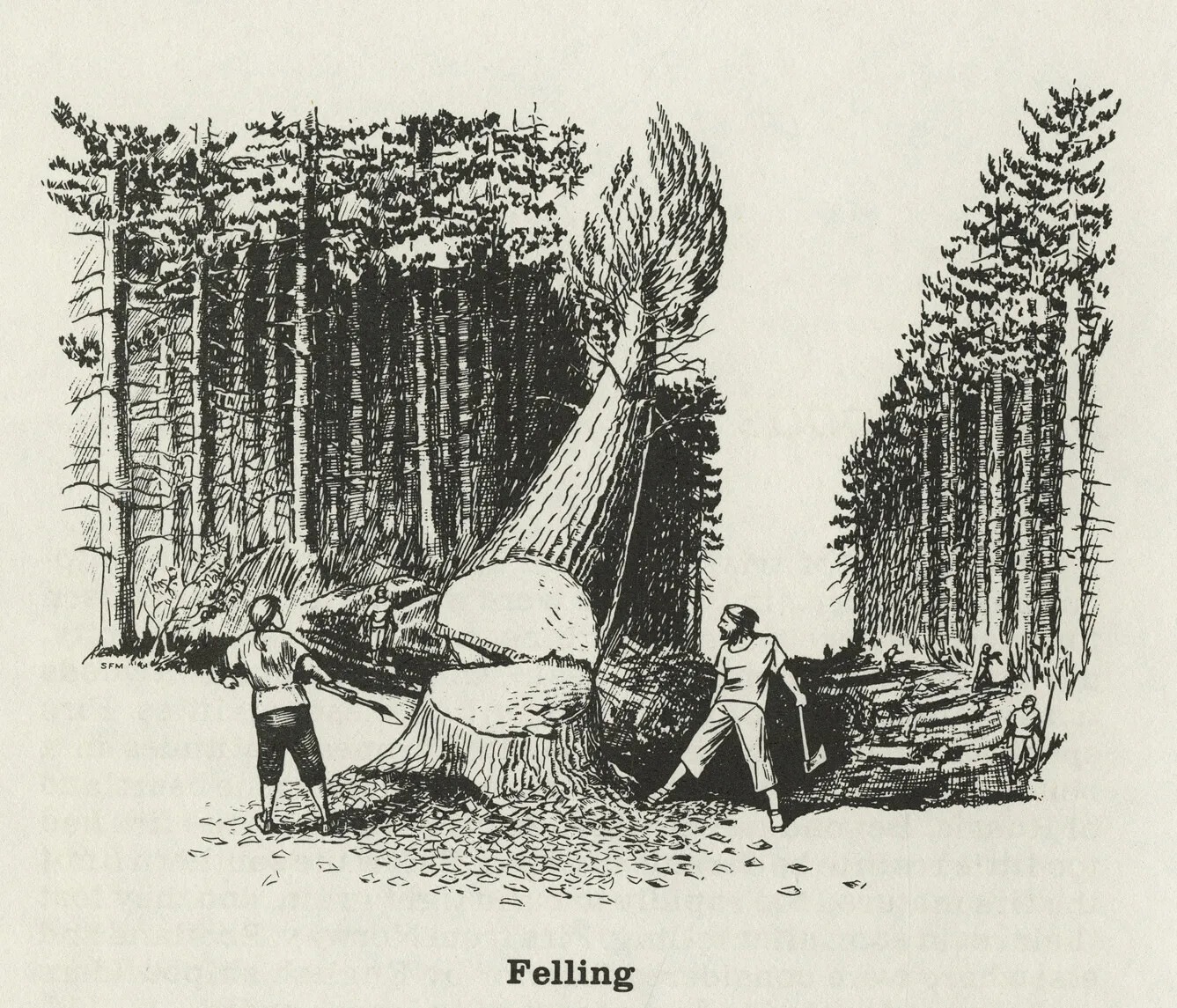
Caption:
Shipbuilding was an important industry for the English people who settled New Hampshire. New Hampshire had an important natural resource, white pine trees, that were used to make ships' masts. Masts are the tall poles on ships that carry the sails. "Felling" is the process of cutting down trees. It was a lot of hard work to cut down the tall pine trees and transport them through the forest and to the harbor, where the shipyard was.Portsmouth merchants filled their ships with these three products and then sailed to other places to sell them. They sold most of their goods in Europe, especially in Great Britain since New Hampshire was a British colony. Once the merchants sold all their goods, they bought other goods to bring back home to New Hampshire. They often brought back things made in factories, like cloth or household items.
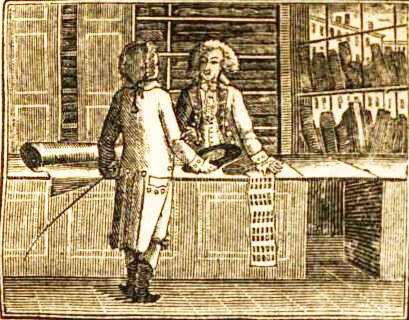
Caption:
Many of the early settlers in Portsmouth, one of New Hampshire's first four English towns, were merchants. Merchants are people who buy and sell items to make money. Colonial merchants bought natural resources, like furs, fish, or mast trees from people who lived further inland. Sometimes they traded with the Native Americans too. Then they sold those items to other people, who shipped them all over the world. As merchants became more successful, they could buy their own ships and sell the goods all over the world themselves. As colonial settlements grew larger and larger, some merchants also opened their own shops to sell goods to other colonists.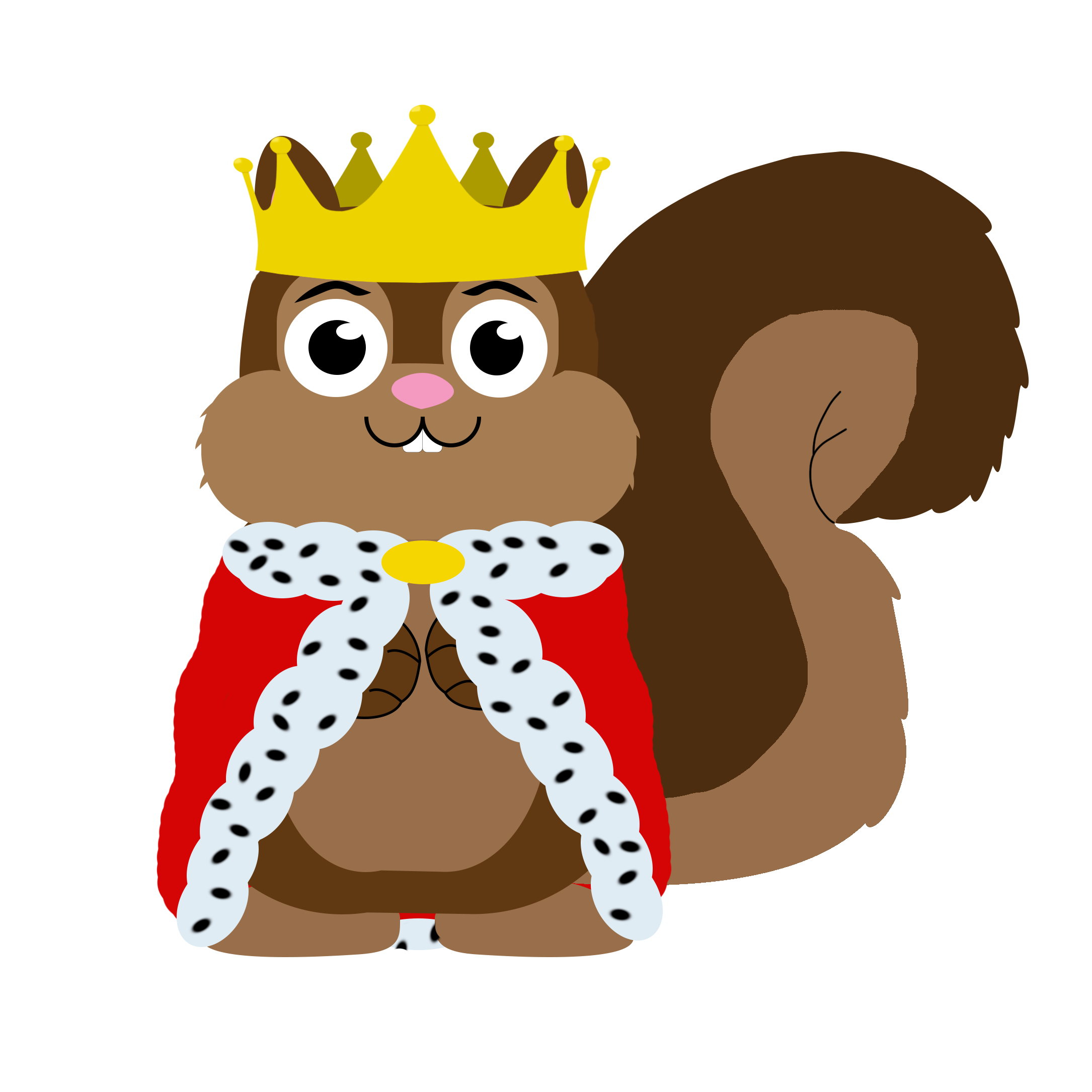
The country of Great Britain goes by many names, including England or just Britain. The people who live there are known as the English or the British. As each colony in America was founded by the English, the British king or queen at the time claimed it for Britain. By the 1760s, Great Britain had established colonies all over the world, not just in America.
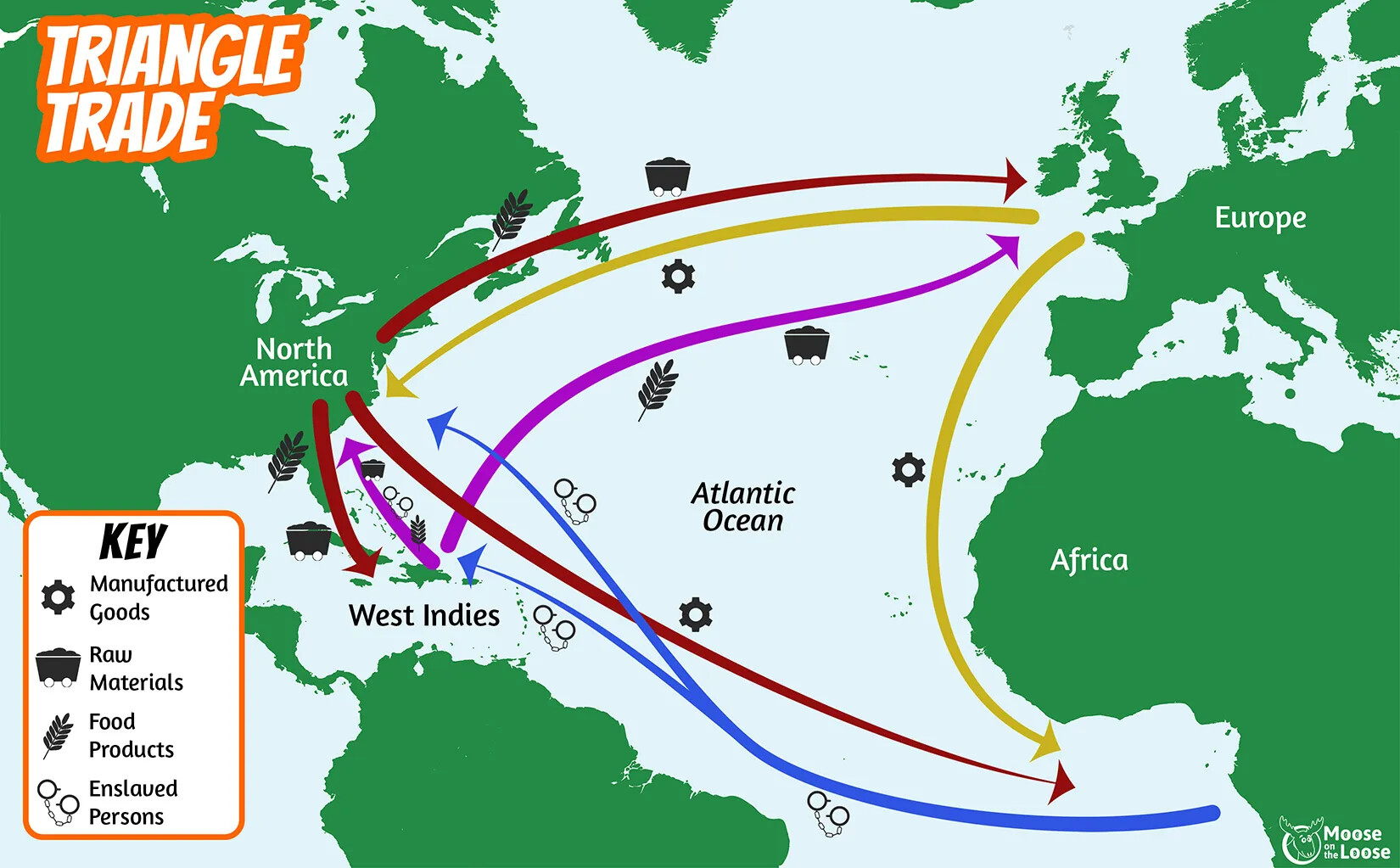
Caption:
Many merchants in Portsmouth and all throughout the British North American colonies participated in the triangle trade. These were trading routes in the 1600s–1800s that linked Africa, Europe, and the Americas. Raw materials, manufactured goods, food stuffs, and enslaved people were traded between the three continents. It is called the triangle trade because it involved an exchange of goods between three continents, and there are three sides to a triangle.Triangle Trade
Sometimes Portsmouth merchants sailed to other parts of the world to get different kinds of goods. In places like the West Indies, merchants bought sugar, which was very popular in New Hampshire. People needed it to make their food taste better.
Other Portsmouth ships sailed to Africa, where merchants bought enslaved people and transported them across the Atlantic Ocean to sell them in America. This kind of trade was called the slave trade, and it brought millions of Africans to the American colonies who were sold into slavery. Many people did not like the slave trade, and some merchants refused to buy and sell people. But lots of merchants in New Hampshire and elsewhere were willing to participate in the slave trade because it made them a lot of money.
This trading between North America, Europe, and Africa became known as the Triangle Trade because it involved an exchange of goods between three different continents.
Many people worked as servants in the merchants’ big houses. They cleaned the house, did the laundry, sewed clothing, chopped firewood, cooked meals, and took care of the horses and other animals, like chickens.
Not many people in Portsmouth were farmers, though. Farmers from other parts of New Hampshire brought their goods to Portsmouth and sold them in the marketplace or in stores. Most people in Portsmouth bought their food instead of growing it themselves.
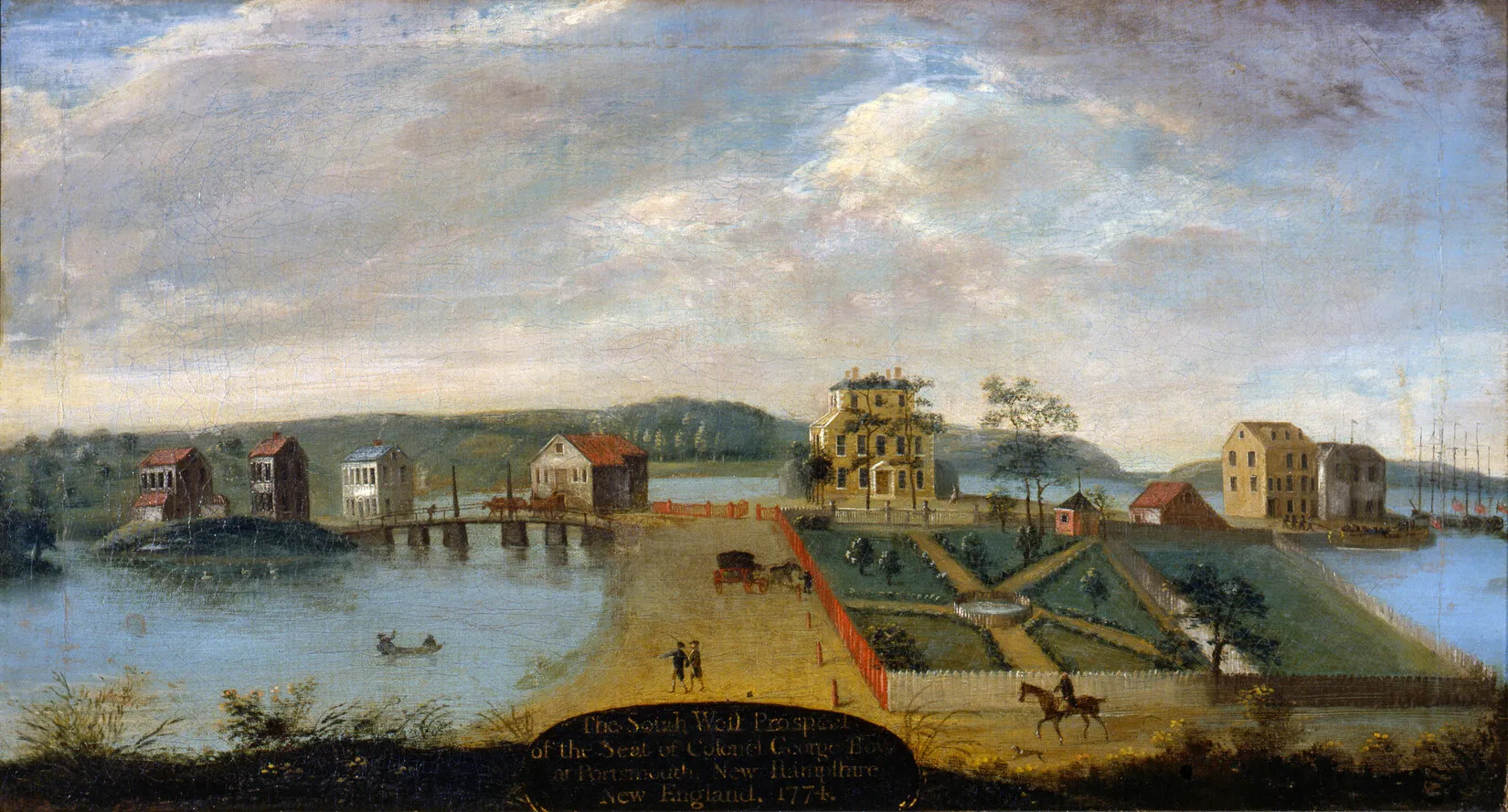
Caption:
This painting, titled "The South West Prospect of Colonel George Boyd of Portsmouth," shows the estate of a wealthy merchant in Portsmouth, New Hampshire. George Boyd participated in the Triangle Trade. He owned a shipyard, a mill, and warehouses. He built ships and loaded them with lumber that he owned, and sent them to the West Indies. His ships' captains sold the lumber there and filled the ships with sugar, and sailed on to England. In England, they sold the sugar and the ships to merchants in London. Notice how large his house and property are. He probably had many servants who worked for him, as well as sailors, warehouse workers, and other employees.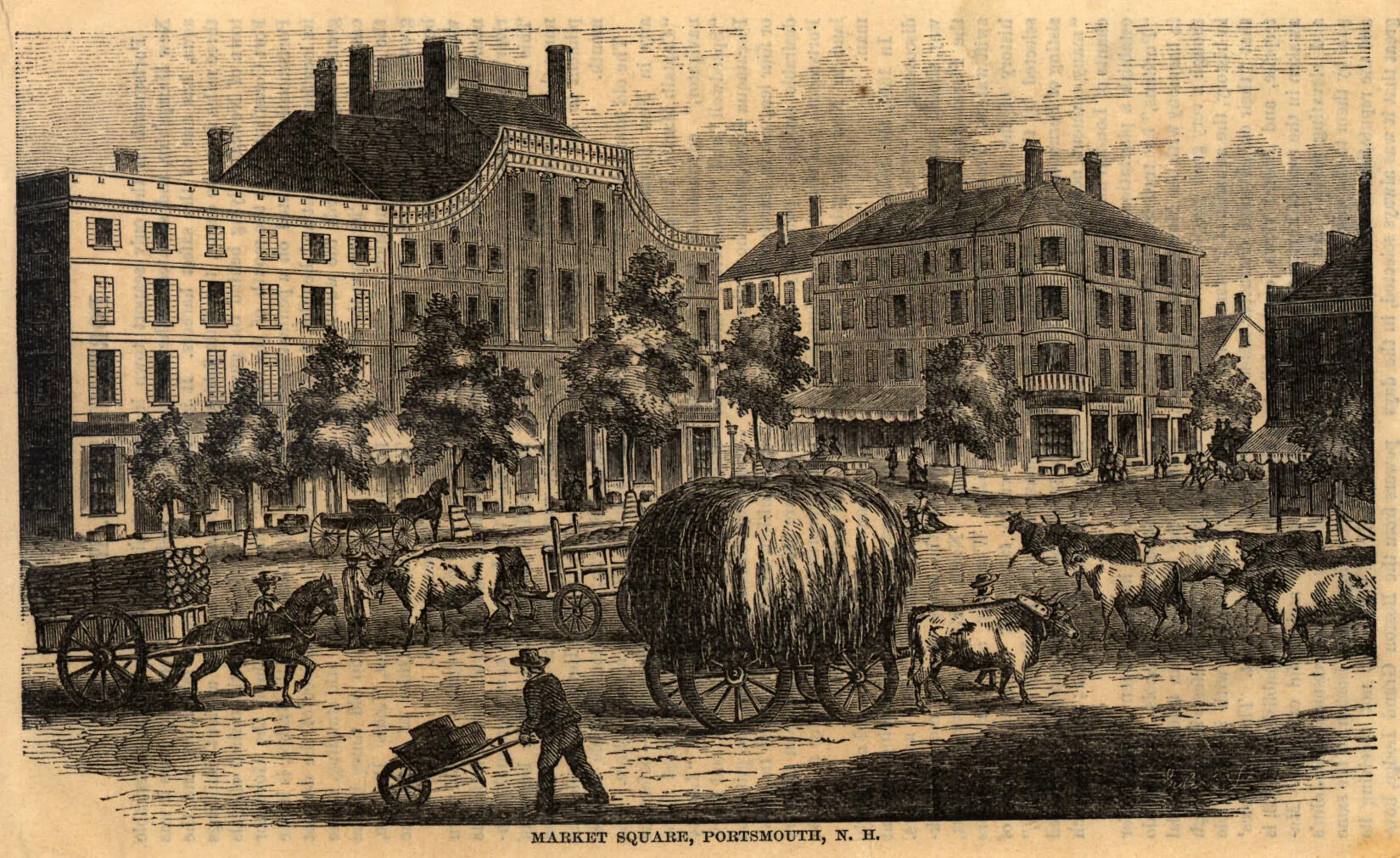
Caption:
This image of Market Square, in Portsmouth, appeared in a magazine in 1870. Market Square has been the center of activity in Portsmouth since the mid-1700s.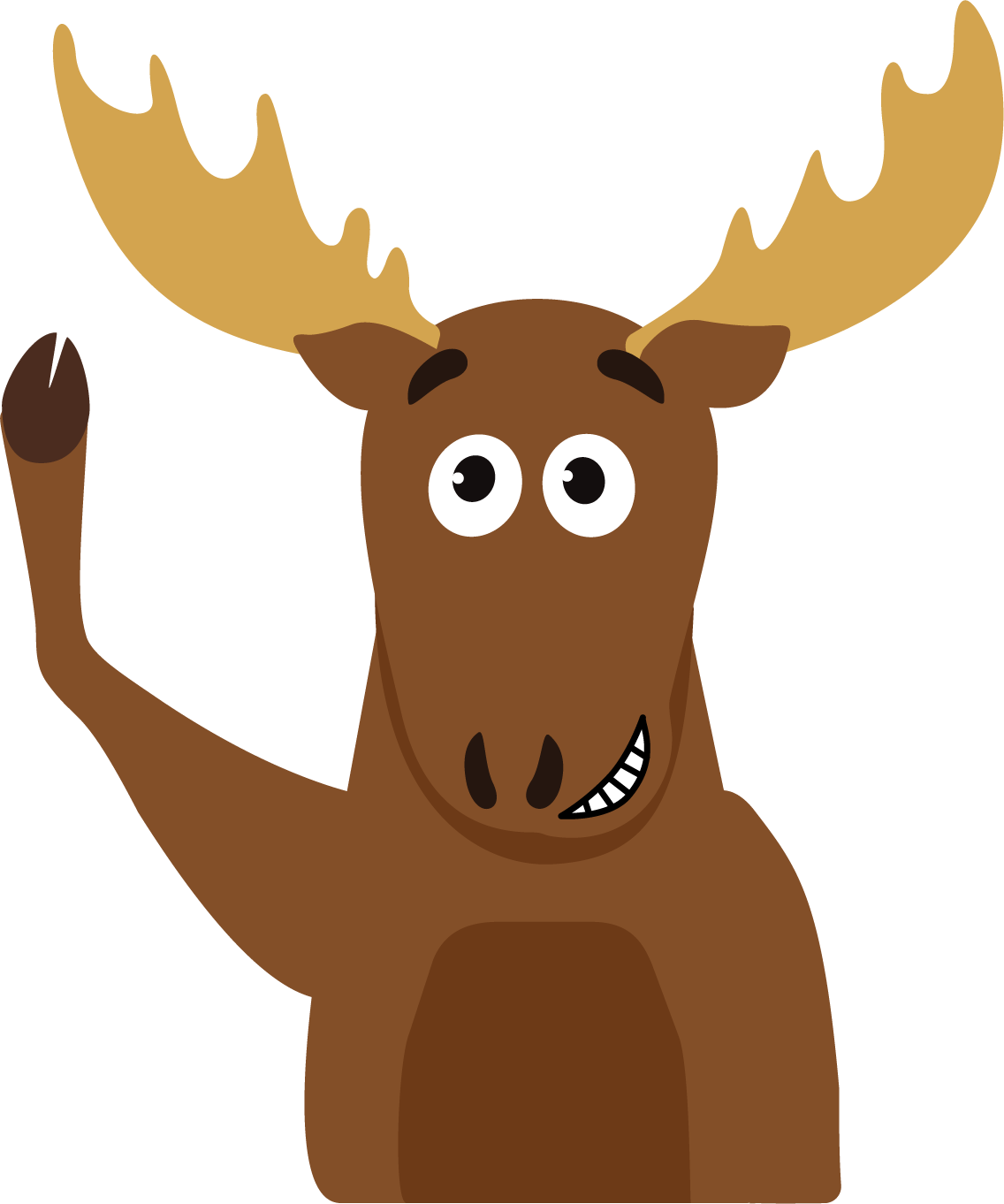
Let's Review!
What are the big ideas in this section?
Portsmouth, The Capital
Portsmouth was the largest settlement in New Hampshire in the 1700s and became the center of the colony’s government. It is on the seacoast and has a deep harbor.
Fish, Fur, Forests
Portsmouth traded New Hampshire’s natural resources of fish, fur, and forests with other places. The British kept the tallest trees, the tall white pines, for their navy’s ships.
Triangle Trade
Traders brought back goods like cloth and sugar from other parts of the world. Merchants also brought back enslaved people from Africa.
Merchants
Most people who lived in Portsmouth during this time were merchants or were connected to merchants, like working for them on shore or building ships. There were not many farmers in Portsmouth and people bought their food from elsewhere in the colony.
Black Americans in New Hapshire
What was life like for Black people in New Hampshire during the colonial period?
Not everyone who lived in New Hampshire during these years was English. New Hampshire’s indigenous people, known as the Abenaki, also lived here. They had once lived all over New Hampshire, but in the late 1600s most Abenaki moved north, closer to the White Mountains and the border with Canada. The Abenaki often came to southern New Hampshire to trade with the English settlers.
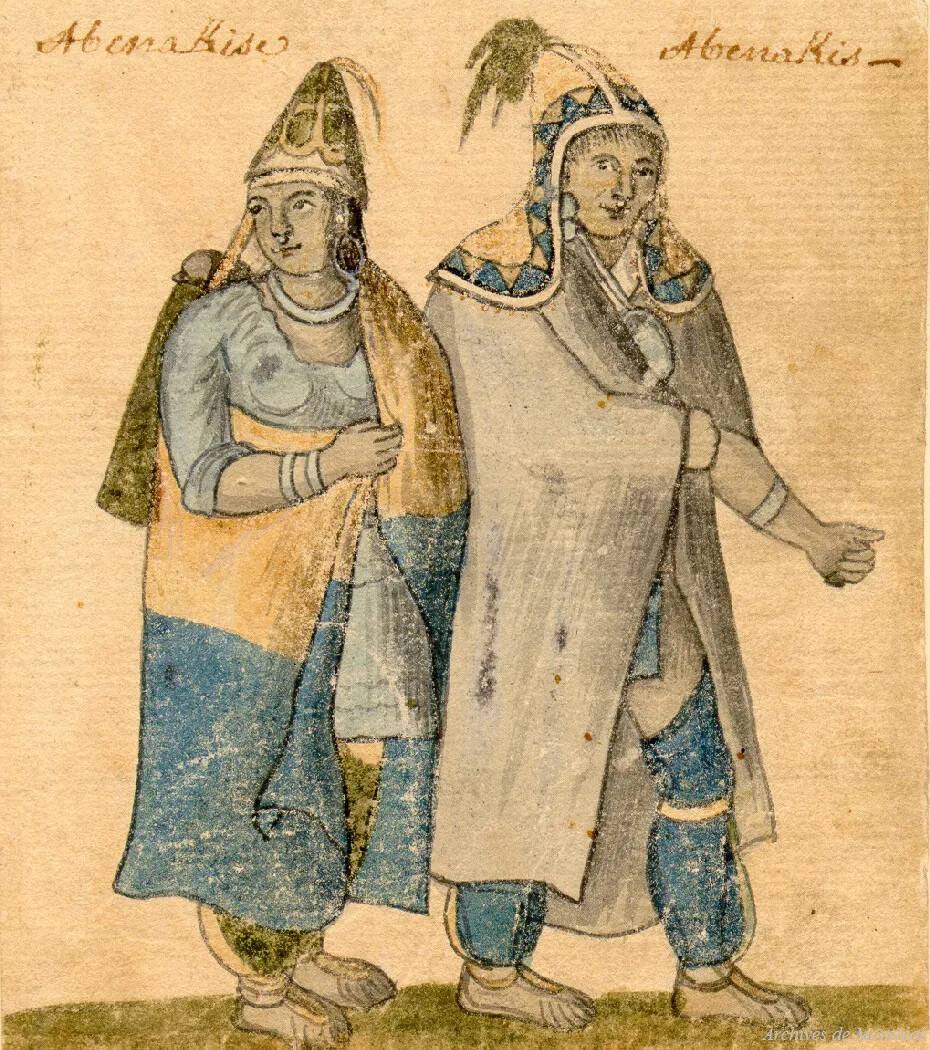
Caption:
This watercolor drawing shows an Abenaki couple wearing traditional Abenaki clothing in the 1700s. It was made by a Canadian artist. The Abenaki homeland, N'dakinna, includes part of what is now known as Quebec in Canada. During the period of English settlement, many Abenaki moved to Quebec from New England. They were pushed out by war and settlers taking their land. Today thousands of Abenaki live in Canada. The Abenaki are one of the indigenous groups recognized as a First Nation by the Canadian government.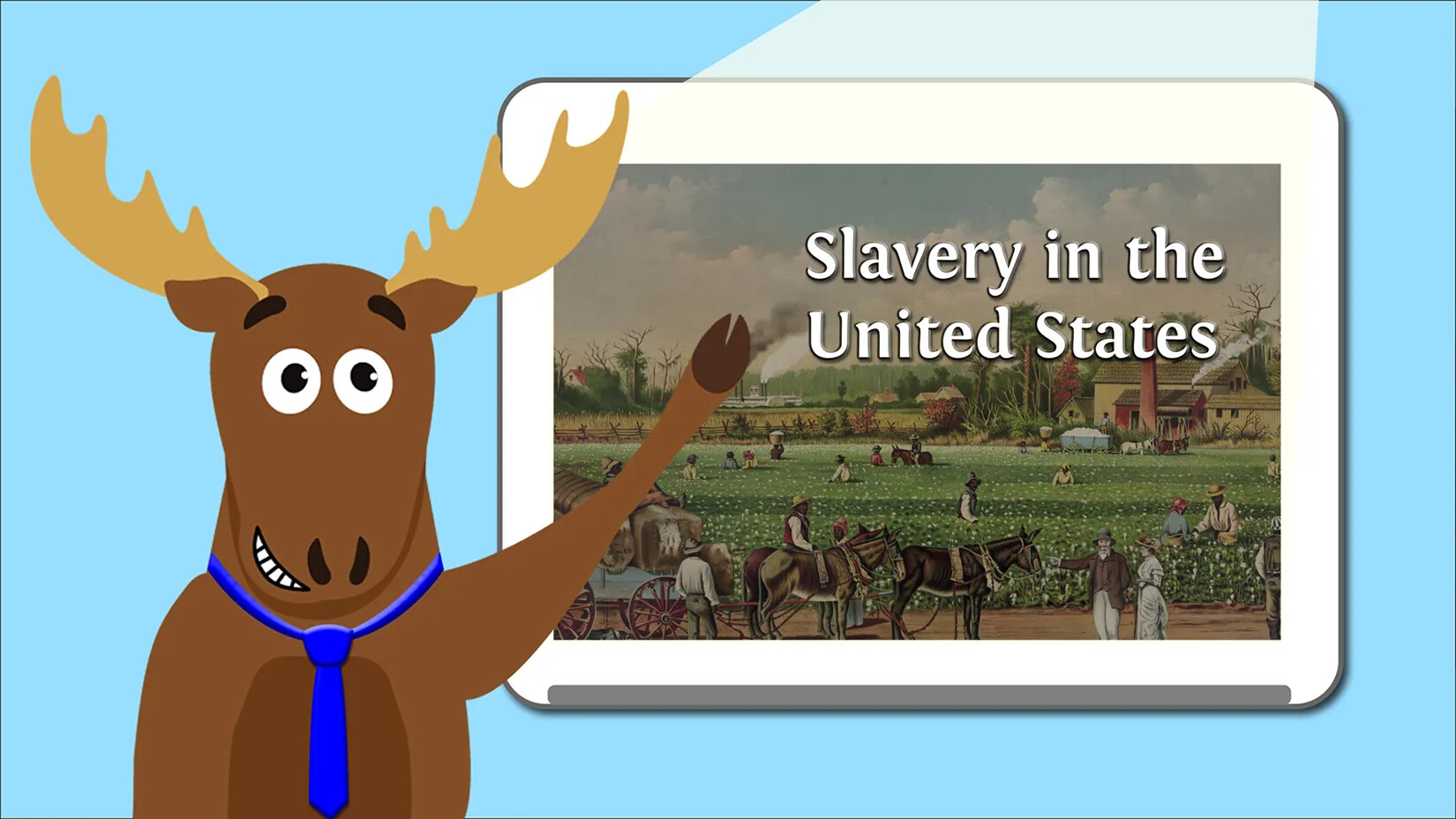
Mason Explains: Slavery in the United States
The Lives of Enslaved People
More enslaved people were brought to New Hampshire in the late 1600s and early 1700s. Most of them lived in Portsmouth, and they worked in all kinds of jobs. Some helped build ships; others were blacksmiths or carpenters. Most enslaved people were servants who worked in the merchants’ homes.
New Hampshire had fewer enslaved people than other colonies in New England, but slavery existed here until the 19th century.
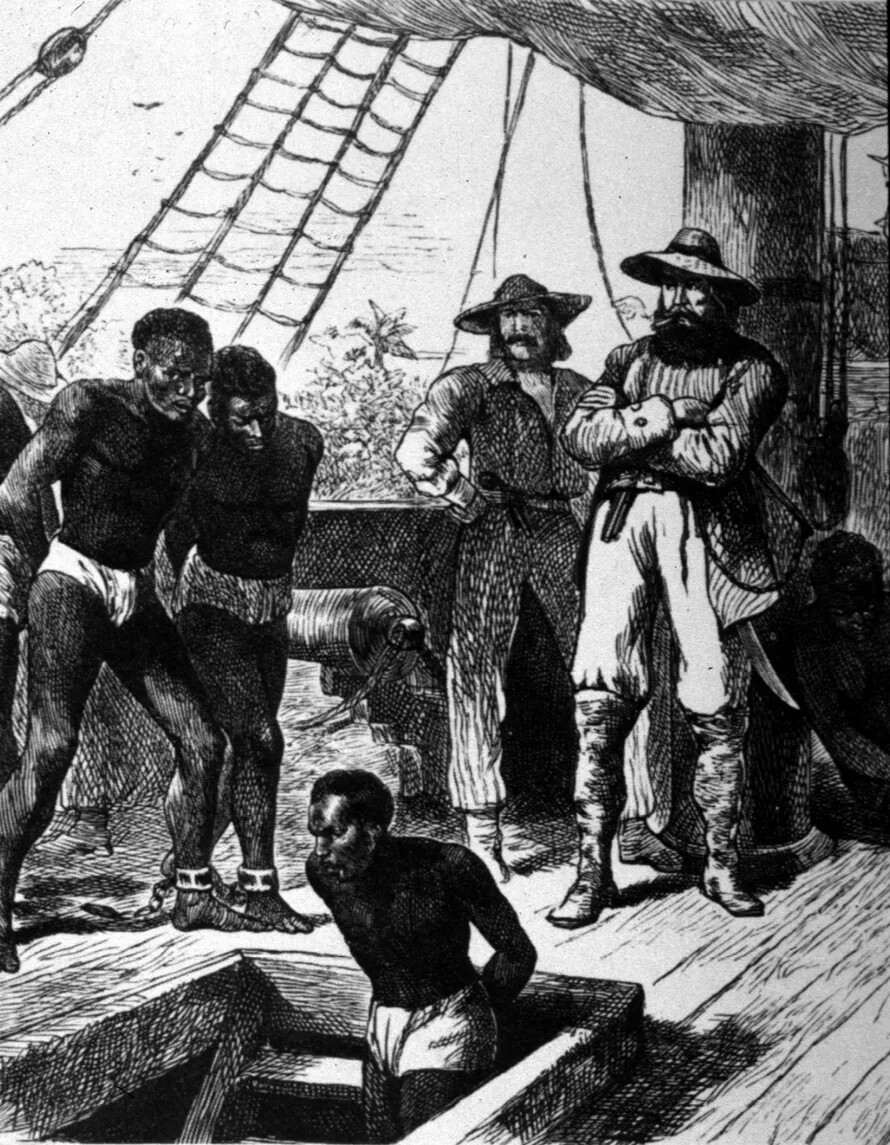
Caption:
During the colonial period, Portsmouth merchants participated in the triangle trade. These were trading routes in the 1600s–1800s that linked Africa, Europe, and the Americas. Raw materials, manufactured goods, food stuffs, and enslaved people were traded between the three continents. It is called the triangle trade because it involved an exchange of goods between three continents, and there are three sides to a triangle. This picture shows one part of the triangle trade called the Middle Passage. The Middle Passage was the journey for kidnapped Africans on ships across the Atlantic Ocean from Africa on the way to be enslaved in the Americas.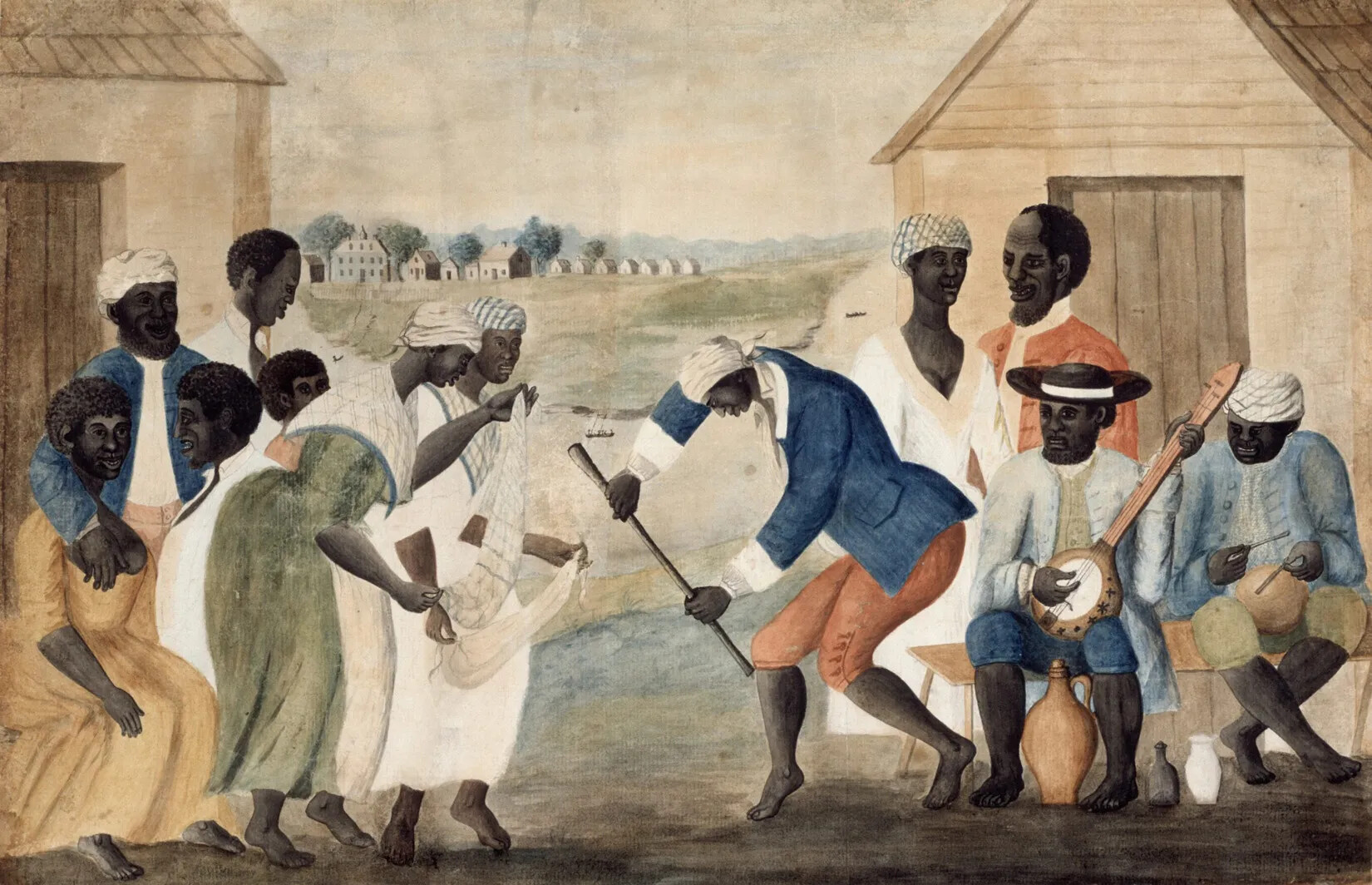
Caption:
This watercolor painting shows enslaved people in a moment of leisure or celebration. It shows how enslaved people were able to maintain African cultural traditions and create new ones. The scene probably took place on the plantation in South Carolina owned by the artist. Although this painting is from South Carolina, enslaved and free Black people in New Hampshire established an important community in the seacoast region and practiced their own traditions and culture, including storytelling, music, and dancing.Some enslaved people became free. Slaveholders could give enslaved people their freedom, or an enslaved person could be allowed to work for their freedom. Once they had earned enough money, they could buy their freedom from the slaveholder. Other enslaved people escaped to places like Canada where slavery was against the law.
As more enslaved people became free, New Hampshire’s population of free Black people grew larger. Most free Black people in New Hampshire lived in Portsmouth during the colonial period. Black people, both free and enslaved, established an important community in Portsmouth. They developed their own traditions and culture, which included music, dancing, and storytelling.
The Black community even had its own holidays, like Negro Election Day. The word “Negro” isn’t a word we use today, but it was common in the 18th century.
On Negro Election Day, the Black people in Portsmouth came together to celebrate their community. They shared food, wore colorful clothes, played music, sang songs, and danced. They also elected a leader for the community who was called the “King of the Africans.”
For the next year, the king provided guidance for the Black community. He helped settle arguments, and he represented the Black community in Portsmouth.

Caption:
This newspaper article announces that "King" Nero Brewster has died. Brewster was an enslaved man who lived in Portsmouth, New Hampshire. He was a leader in Portsmouth's Black community. The Black community had a holiday called Negro Election Day. (The word “Negro” isn’t a word we use today, but it was common in the 18th century.) On Negro Election Day, the Black people in Portsmouth came together and elected a leader for the community who was called the “King of the Africans.” For the next year, the king helped settle arguments and provided guidance for the Black community. Nero Brewster was a highly respected "King of the Africans."Caption:
Nero Brewster was born in Africa. He was enslaved as a child and transported to New England. His enslaver was William Brewster, a tavern owner in Portsmouth who was involved in the patriot cause. It was common at that time for enslaved persons to use the last name of their owner. Nero Brewster was a leader in the African American community in Portsmouth, where he was known as “King Nero.” He was the leader of the group of enslaved men who sent a petition to New Hampshire’s government in 1779 asking for their freedom. When Brewster died in 1786, at the age of 75, he was a free man, but there is no record of when he was freed.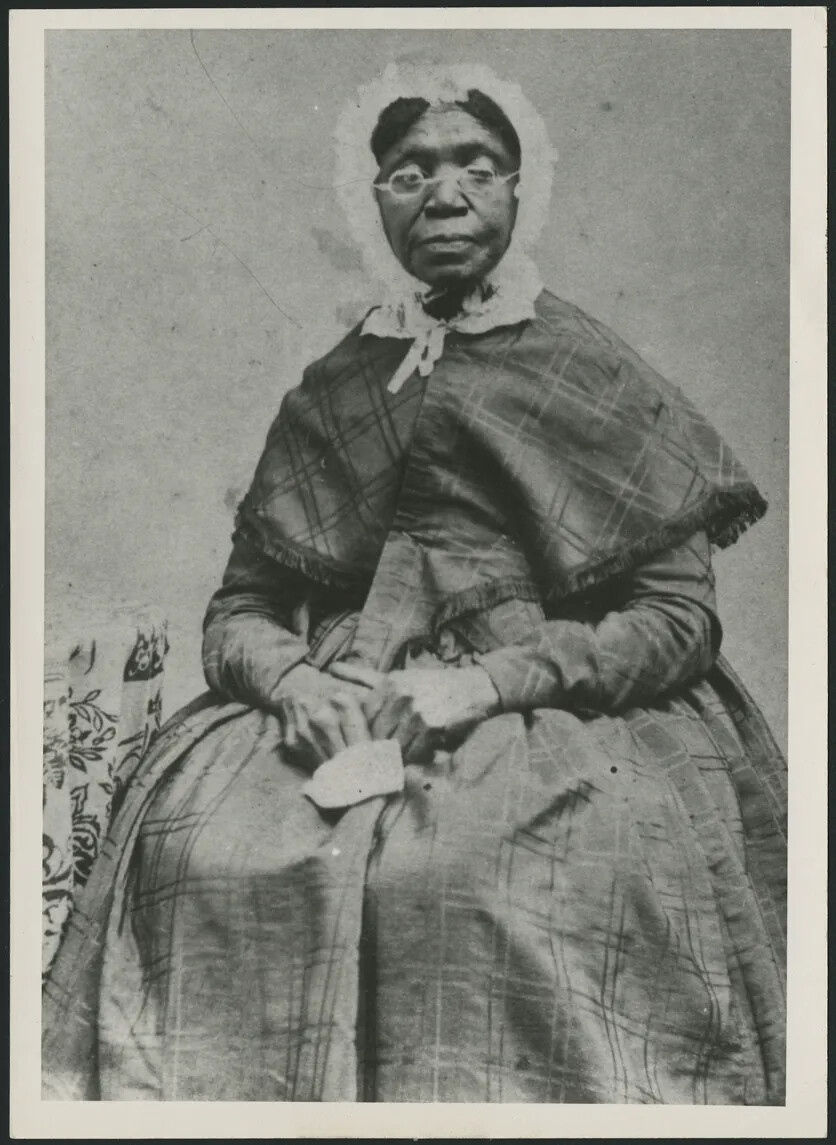
Caption:
This photograph of Esther Whipple Mullinaux is the earliest known image of a member of Portsmouth's Black community. Esther was the daughter of Prince and Dinah Whipple. Prince was formerly enslaved by William Whipple, but was freed in 1784, around the time that Esther was born. Prince was one of the men who signed the freedom petition in 1779, which asked the New Hampshire government to end slavery. Esther worked in housekeeping and saved enough money to purchase a house. She and her family were active members of the North Church in Portsmouth. She died in 1868.As the 18th century went on, slavery became less popular in New Hampshire. There were fewer enslaved people and more free Black people in the colony. Black people also began moving to other towns than Portsmouth in New Hampshire. Many towns had Black residents during this period.
Let's Review!
What are the big ideas in this section?
Enslaved People in NH
Starting in 1645, Black people from Africa were enslaved and brought to New Hampshire as part of the slave trade. Slavery was not against the law at this time.
Life in Portsmouth
The enslaved people brought to New Hampshire in the 1600s and 1700s mostly lived in Portsmouth. They worked in all kinds of jobs like being servants or blacksmiths.
Black Community
Some enslaved people became free or escaped enslavement. Soon, there was an important community of Black people, both free and enslaved, in Portsmouth.
Black Traditions and Culture
The Black communities in New Hampshire had their own traditions and culture. For example, on one special day they danced and sang and elected their leader for the year, who was called the “King of the Africans.”
The Scots-Irish Come to New Hampshire
Who were the Scots-Irish, and what did they contribute to New Hampshire?
In 1719, a new group of people came to New Hampshire called the Scots-Irish. They were originally from the country of Scotland, which is part of Great Britain. In the 1600s, they moved to Ireland, which was a British colony. That’s how they got their name—they were Scottish people who moved to Ireland.
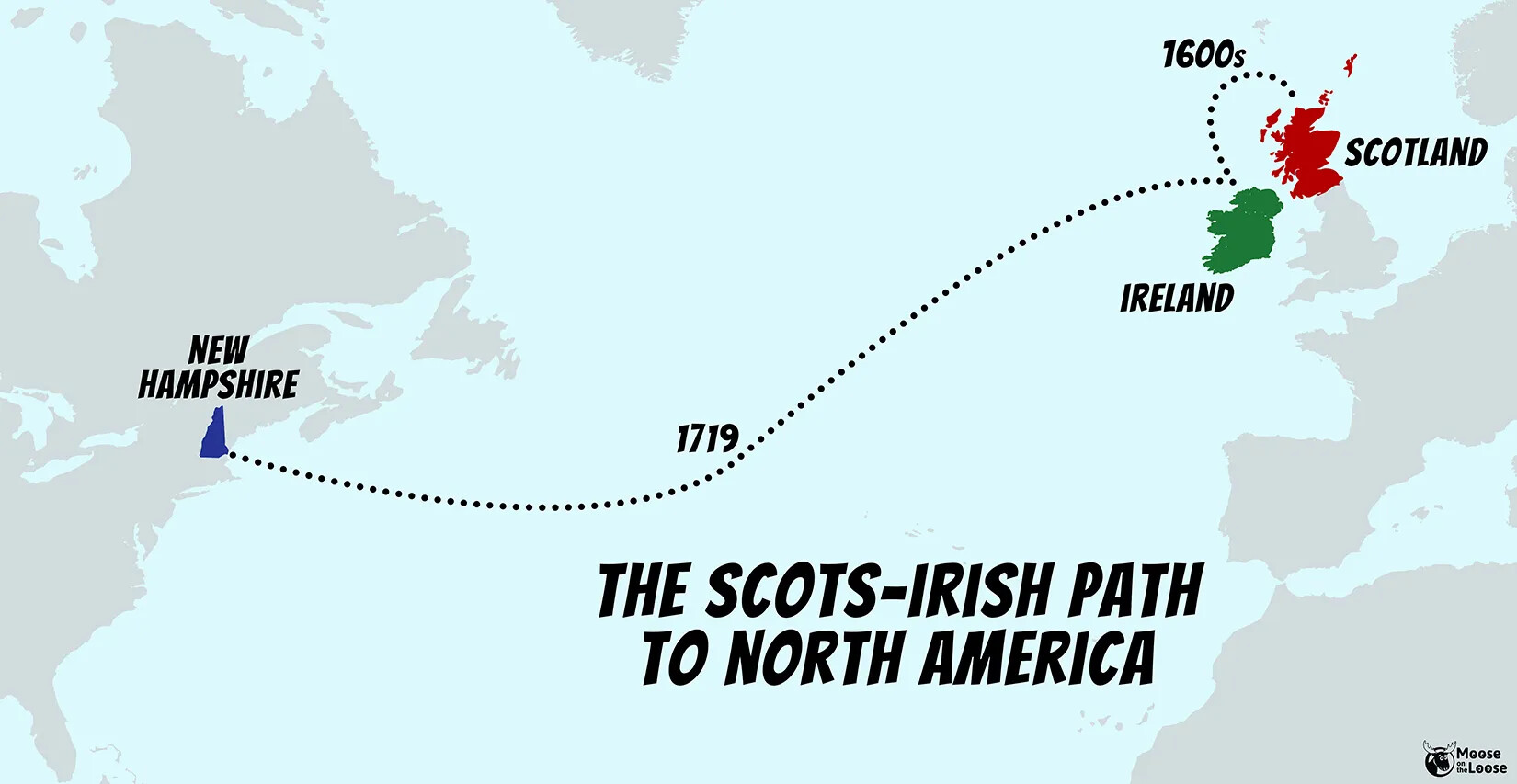
Caption:
In the early 18th century, the Merrimack Valley was settled by the Scots-Irish. These people were originally from Scotland, which is part of Great Britain. In the 1600s, they moved to Ireland, which was a British colony at that time. That's why they were called Scots-Irish. Then in the 1700s, many of them moved to Britain's colonies in North America, including New Hampshire.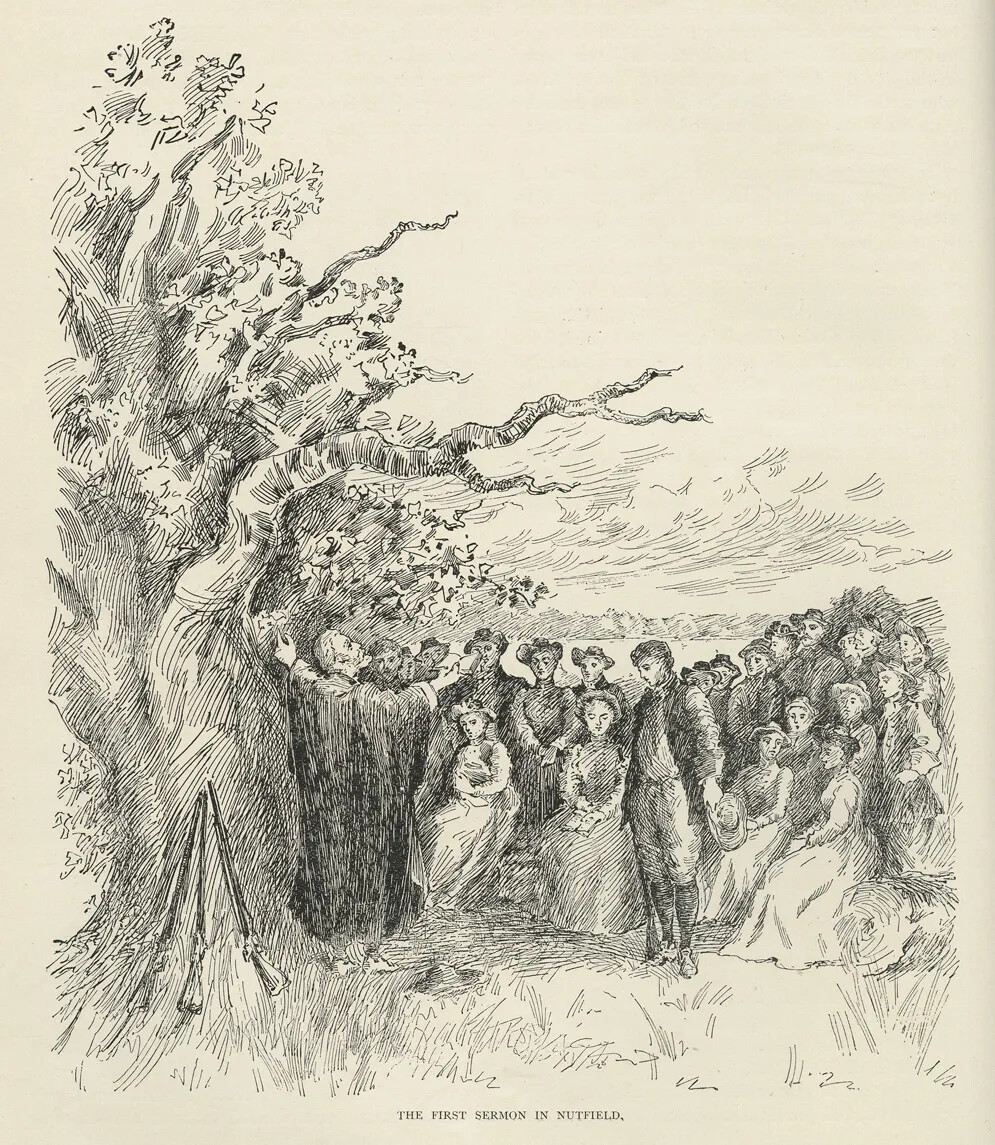
Caption:
A group of people called the Scots-Irish settled in the Merrimack Valley in New Hampshire starting in 1719. They built a settlement on the banks of the Merrimack River in an area with a lot of nut trees and good farmland. They called in Nutfield, because of all the nut trees, but it is now known as Londonderry. According to tradition, the Reverend James McGregor held the first religious service for the new settlement of Nutfield on April 12, 1719. It was held under a big oak tree near the shore of Beaver Lake in what is now East Derry. Over the next decades, more and more Scots-Irish came to New Hampshire and spread out all over the colony.The Scots-Irish wanted more land than they had in Ireland, so in the early 1700s, they came to America. After arriving in Boston, a group of 16 families went north to New Hampshire. They had heard about some land in a valley that was full of nut trees in the Merrimack River Valley.
The Scots-Irish built a settlement on the banks of the Merrimack River. At first, they named it Nutfield because of all the nut trees, but they soon changed the name of their community to Londonderry, naming it after a town in Ireland.
When the Scots-Irish arrived in the Merrimack River Valley, they were the only settlers living in this part of New Hampshire. (The Abenaki had moved to northern New Hampshire years earlier.) Soon, many more Scots-Irish people joined the Scots-Irish in New Hampshire.
Some built farms in Londonderry, but others settled new towns, first in the Merrimack River Valley and then throughout all of New Hampshire.
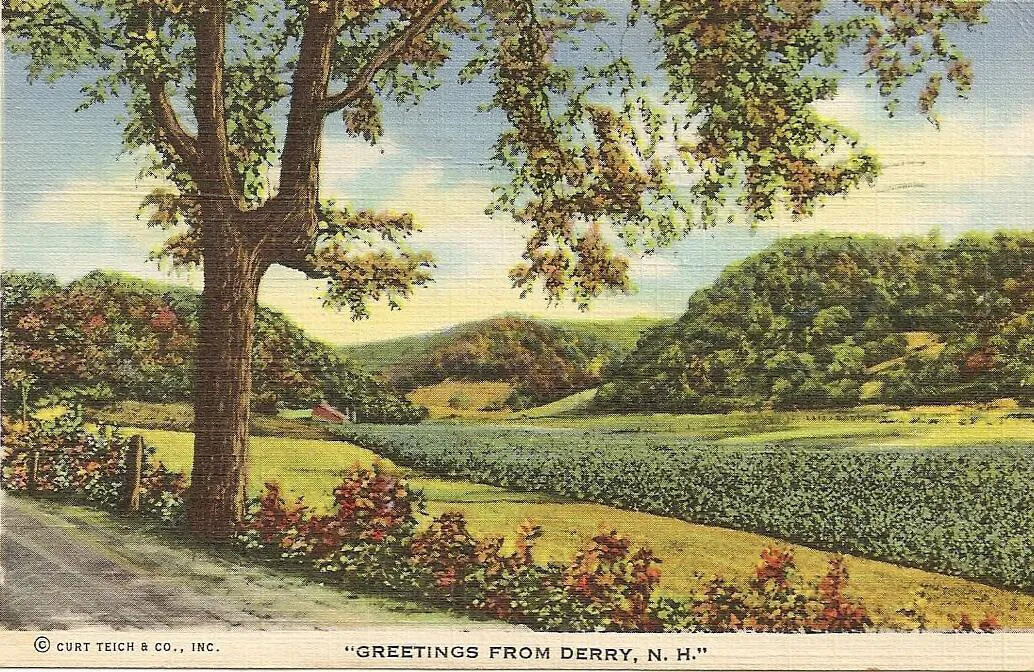
Caption:
The first settlers in the Merrimack Valley were Scots-Irish, people who were originally from Scotland, but had moved to Ireland. Beginning in 1719, many Scots-Irish moved from Ireland to New Hampshire. They wanted more land and to preserve their culture and religion. Many were farmers, and soon farm towns full of Scots-Irish settlers spread all over the Merrimack Valley.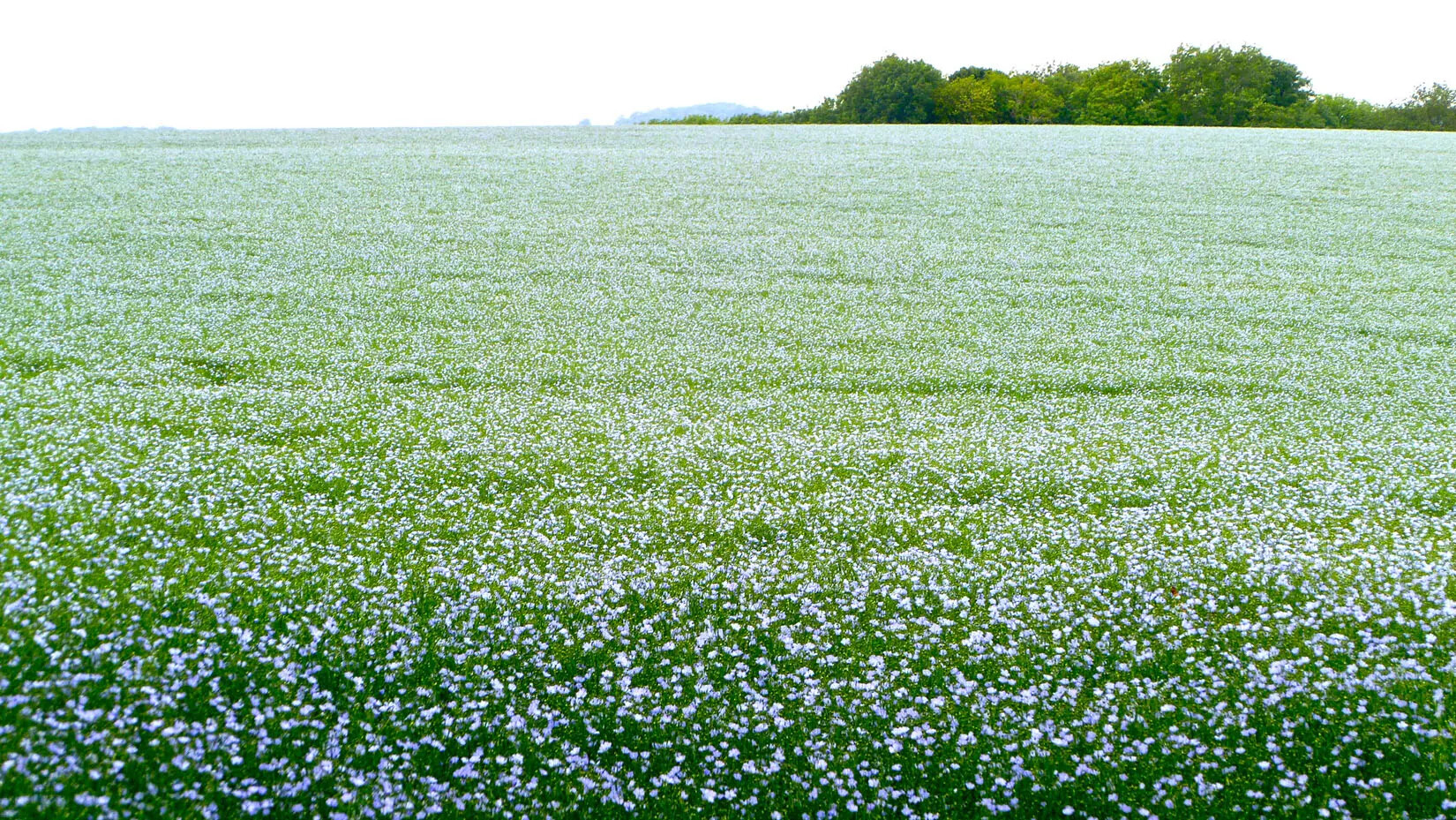
Caption:
This is a field of flax growing in Hampshire, England. Flax is a type of plant whose fibers are used to make a cloth called linen. Many Scots-Irish immigrants to the Merrimack Valley in the 1700s were flax farmers, and they brought flax with them to New Hampshire to grow. They harvested it, spun it into thread, and wove the thread into linen. Londonderry became famous for its linen cloth.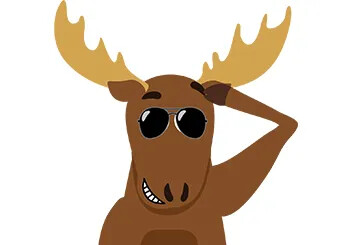
When the Scots-Irish arrived in New Hampshire, they brought with them a new kind of vegetable called a potato. Potatoes had long been popular in Europe, especially Ireland. In fact, many people in Ireland ate potatoes every single day! But potatoes were not grown in America then. In 1719, the Scots-Irish began planting fields of potatoes in New Hampshire. Some people say that these potatoes were the first ones grown in America.
The Scots-Irish brought different traditions and culture to New Hampshire, including new kinds of crops to grow on their farms, such as the potato. Potatoes became an important source of food for Americans.
The Scots-Irish also brought flax, which is a kind of grain that people use to make rope and a type of cloth called linen. Londonderry became famous for its linen, which was used to make shirts and other clothing.
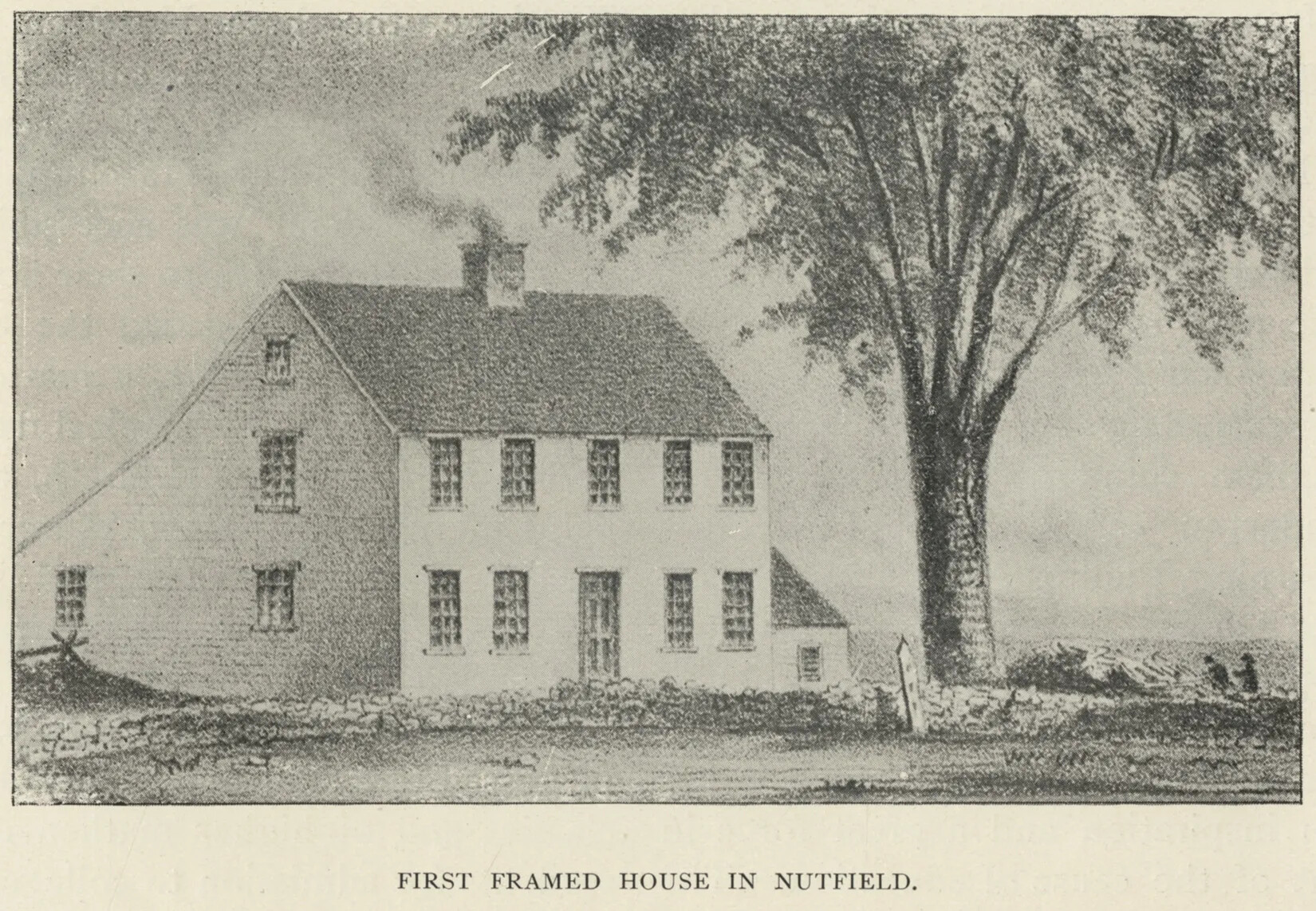
Caption:
This is an illustration of the first house built in the settlement of Nutfield, which is called Londonderry today. Nutfield was settled by Scots-Irish immigrants beginning in April 1719. They called it Nutfield because there were so many nut trees there—butternut, black walnut, chestnut, hickory, and others. Their first houses were made of logs covered with bark. By the end of 1719, the settlers had built a sawmill. The sawmill sawed logs into wooden planks. The settlers used the planks to build new, larger houses made of timber. The first one was built for Reverend James McGregor, who was the leader of the settlement.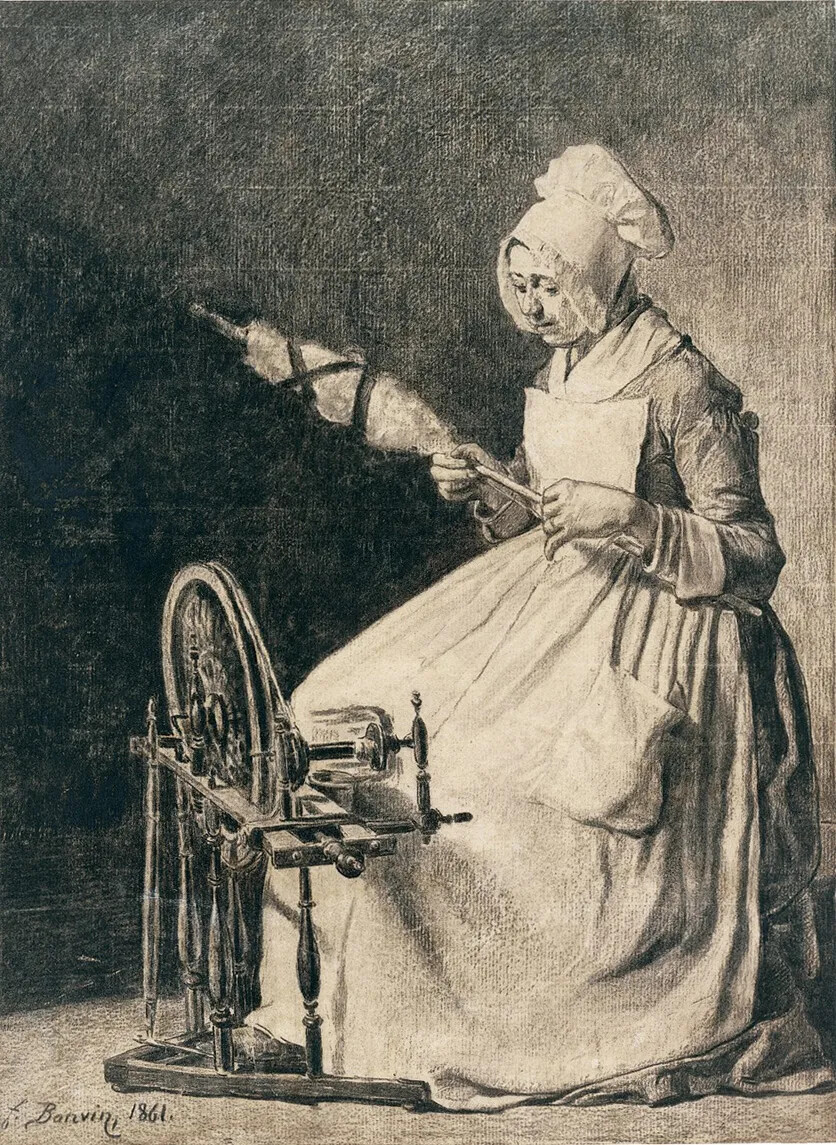
Caption:
This woman is using a spinning wheel to spin flax into thread to make a type of cloth called linen. Flax is a type of plant with long, strong fibers. First the fibers have to be wound around a distaff, which the woman in the picture is holding. Then the spinning wheel twists the fibers into thread, which is later woven into cloth. Many Scots-Irish immigrants to the Merrimack Valley in the 1700s were flax farmers who grew flax and produced linen cloth. Londonderry became famous for its linen. Although this image is from the 19th century, the type of spinning wheel the woman is using is similar to the spinning wheels that Scots-Irish immigrants used.The Scots-Irish were known for being hard workers. They lived simply and did not like to spend their money on unnecessary things. This is called being frugal. They also became known for being practical and independent. These traits—hard-working, frugal, practical, and independent—later became part of what it meant to be a New England Yankee.
Many people who live in New Hampshire today have Scots-Irish ancestors.
Let's Review!
What are the big ideas in this section?
The Scots-Irish
The Scots-Irish came to New Hampshire beginning in 1719. They were called Scots-Irish because they were Scottish people who first moved to Ireland then to the New Hampshire colony in America.
Merrimack Valley Towns
They settled on the Merrimack River near nut trees and soon more Scots-Irish people joined them. They settled more towns in the Merrimack River Valley.
Scots-Irish Traditions
They brought different traditions and culture, including foods like the potato. Their way of living included working hard, and being independent, frugal, and practical.
Londonderry
Londonderry, where they first settled, became the center of Scots-Irish immigration in New England. It became famous for its linen. Linen is made from flax, which is a grain the Scots-Irish brought to New Hampshire.
More New Hampshire Settlements
How did settlement spread throughout New Hampshire during the 18th century?
The Scots-Irish weren’t the only settlers to come to New Hampshire in the 18th century. Many settlers from Massachusetts moved to New Hampshire during this period as well. They were looking for more land to farm. They founded towns across all of southern New Hampshire and even explored north into the Lakes Region and up the Connecticut River Valley. A few of these settlers even traveled through the White Mountains and into the Great North Woods. Most of New Hampshire’s towns were settled during this period.
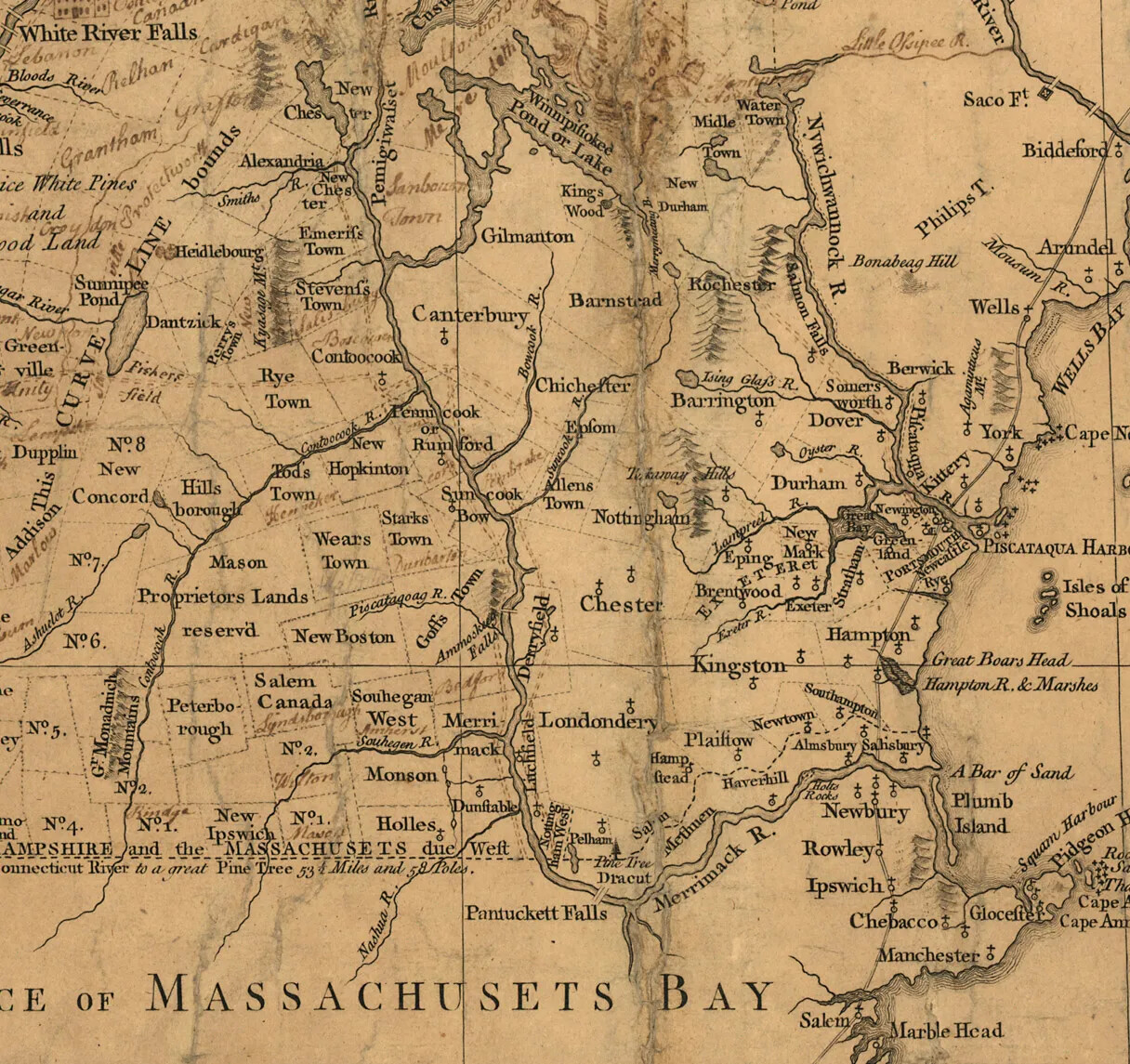
Caption:
This was the first printed map of New Hampshire. It was made around the time of the French and Indian War. This detail, or small part, of the map shows the Merrimack Valley. Many of the towns in this region were founded by Scots-Irish settlers. Others were founded by people who moved from Massachusetts in search of more land. Note that the town marked "Penacook or Rumford" is known as Concord today, and the town marked "Dunstable," near the border with Massachusetts, is known as Nashua today.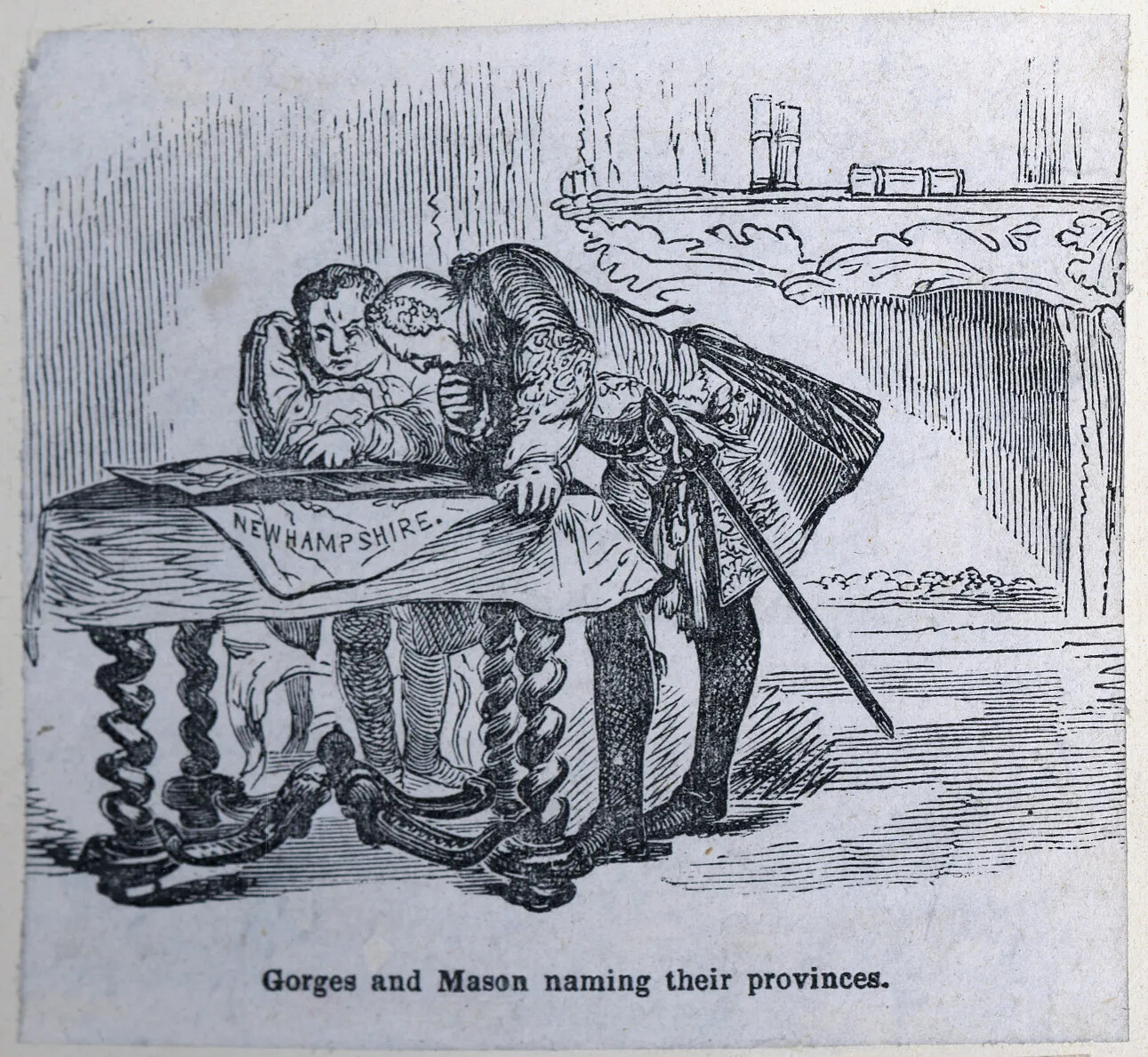
Caption:
This cartoon imagines Captain John Mason and Sir Ferdinando Gorges naming their colonies. They were both awarded a large land grant from the English king in 1622. Later they split the grant, and Gorges got the land that became Maine and Mason got the land that became New Hampshire. Mason named New Hampshire after his home in England, Hampshire County. Mason died before he could ever travel to New Hampshire.Caption:
Although other Englishmen came to New Hampshire in the early 1600s, the founder of New Hampshire was a man named Captain John Mason. He named this land after his home county in England, Hampshire. Mason planned to bring his wife and newborn baby with him when he and a group of settlers came to the New World in 1635. They planned to make money from all the fish in the waters off New Hampshire’s coast. They also thought they could trade with the Native Americans for beaver pelts, which were very popular in England. Unfortunately, Mason died unexpectedly before leaving England. For nearly 100 years afterward, his heirs fought to protect their claim to New Hampshire.People couldn’t just show up and start farming the land, though. They had to become the owners of the land first. In the 1740s, the unsettled parts of New Hampshire were owned by a group of Portsmouth merchants known as the Masonian Proprietors. The group was named after one of colonial New Hampshire’s earliest settlers, John Mason.
The Masonian Proprietors divided up all the land they owned into townships. Then they gave each township to a group of settlers who wanted to set up a new town. The Masonian Proprietors gave the settlers a charter for the town, which made the settlers the owners of the land. But the settlers had to promise the Masonian Proprietors that they would settle the town quickly. The Masonian Proprietors kept a few parcels of land in each town for themselves.
Caption:
John Mason was an English investor who gave New Hampshire its name. A naval officer and businessman, Mason had been the governor of the British settlement of Newfoundland, on the coast of Canada. He realized how important the fur trade was, so he started a company based in New Hampshire to supply beaver furs for sale in England. The business was called the Laconia Company. Mason sent English settlers to build outposts along the Piscataqua River and the other rivers around what is now Portsmouth. Mason named this area New Hampshire after Hampshire County, where he lived in England. Mason was planning to move to New Hampshire, but he died before he could leave England.In each town, the settlers divided up the land into lots and gave lots to all the people who wanted to live there. To keep their land, though, each family had to build a house and start to farm the land within a few years. Otherwise ownership of the land would go back to the town.
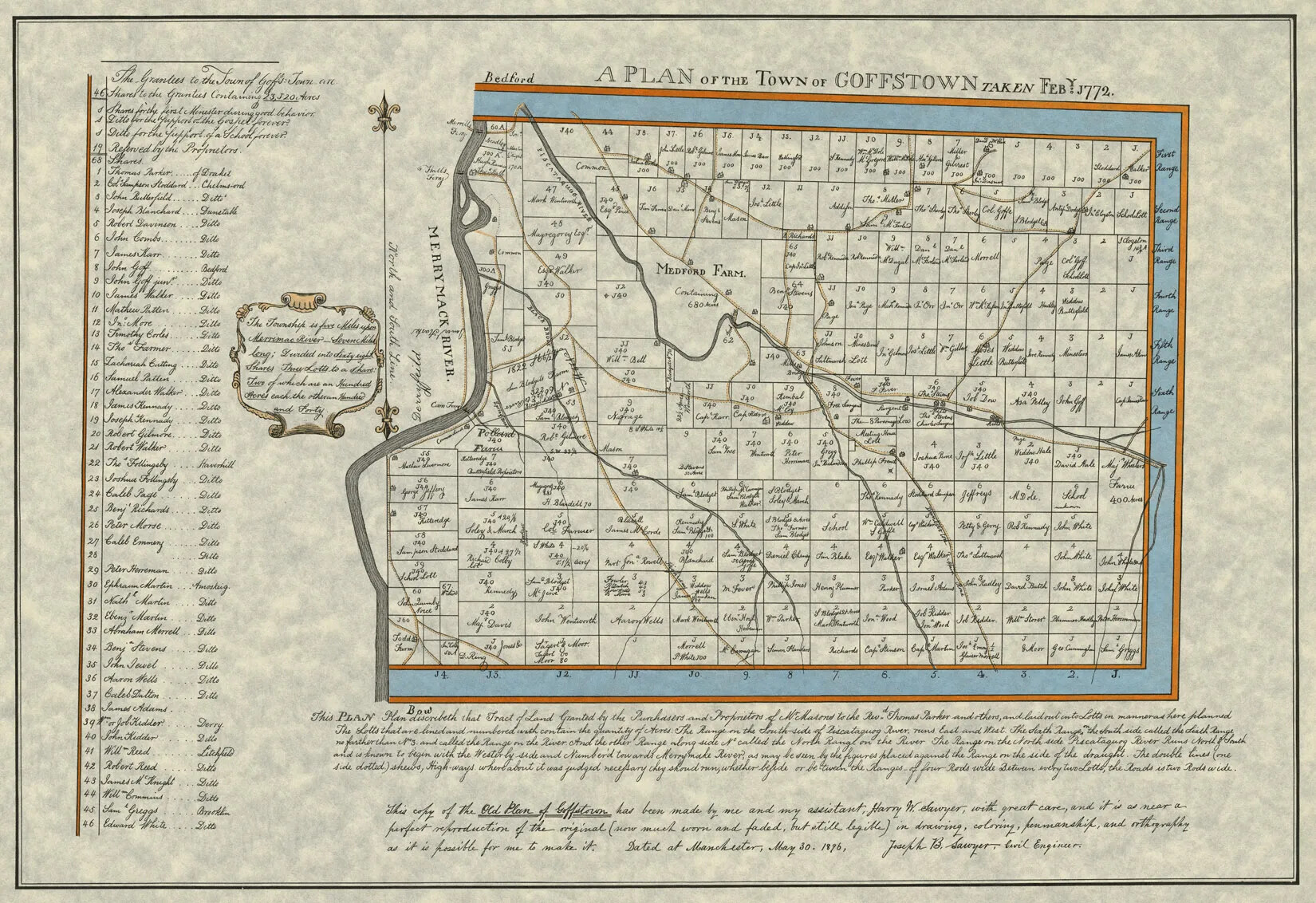
Caption:
This plan of the town of Goffstown, New Hampshire, shows how the land was divided up into different plots owned by the townspeople. When the town was founded, in 1761, each settler was randomly assigned three lots. The lots could be anywhere—next to each other, across town from each other, even in the middle of a pond! Then they had to trade with each other if they wanted their lots to be close together. If you look closely at the names in the plots, you will see that some people were not able to do that!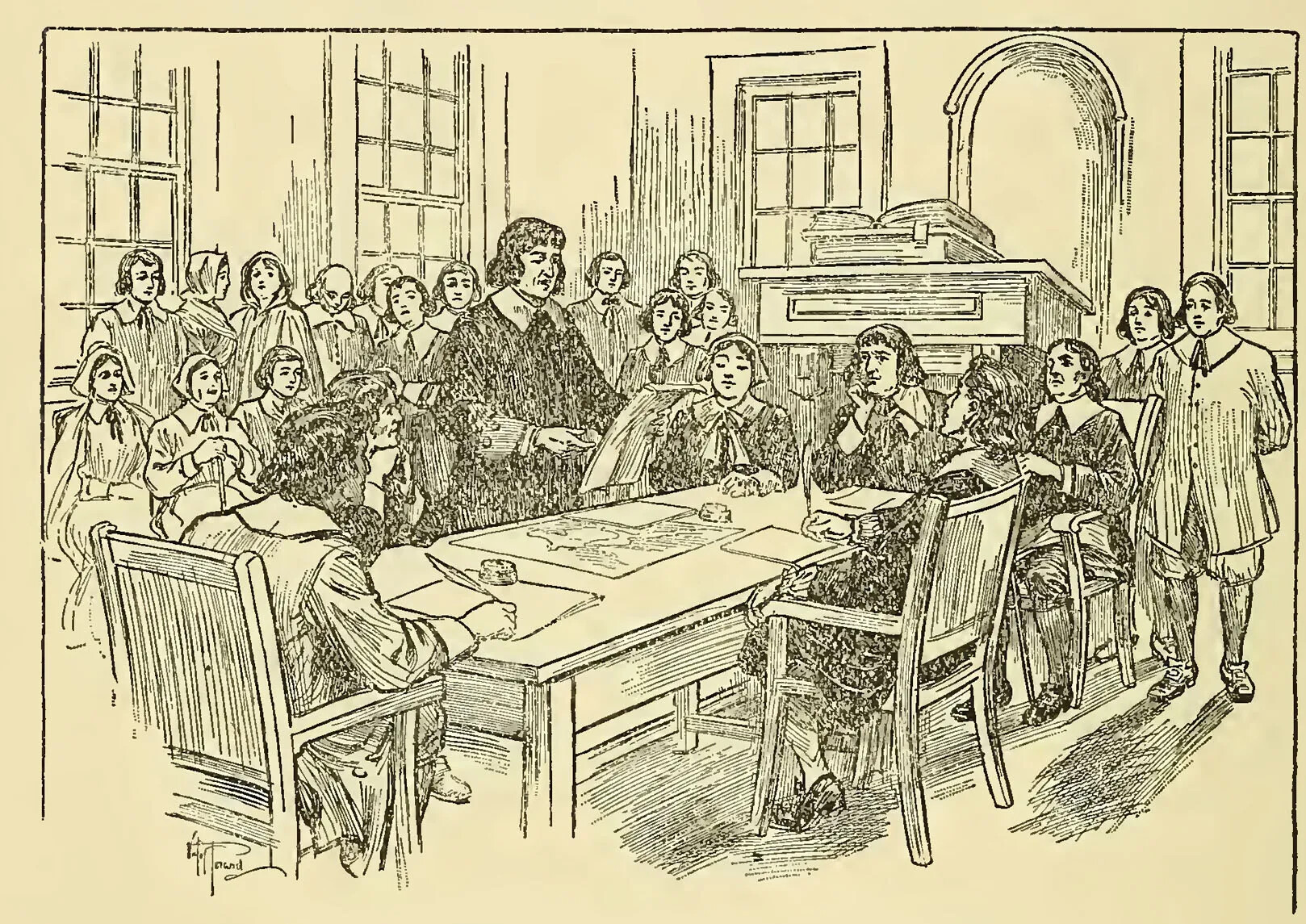
Caption:
New Hampshire's tradition of town meetings started in the 1630s. The townspeople would meet, sometimes as often as once a week, to discuss and vote on issues that were important to the town. For example, they would decide how to divide up the land, how much each person should pay in taxes, and where the farm animals were allowed to graze. All adult men who owned land could vote in town meeting. Women and enslaved people were not allowed to vote. Town meetings usually took place in the meeting house, which was also where church services were held.The settlers also had to form a town government. The people in each town elected men to lead the town. These men were called selectmen. Many towns in New Hampshire are still governed today by a board of selectmen and selectwomen. Although the selectmen were the town leaders, the people in each town made a lot of the decisions for the community in their town meeting.
Town meetings were held at least once a year and almost always in March. In the 18th century, town meetings were almost like community fairs. Families would come to the meeting and talk with friends, share food, and play games. The men would also spend time together making decisions for the town, like whether to build a school or how much money to spend fixing a bridge. This tradition of everyone coming together to make decisions for the community is still a very important one in New Hampshire.
According to the town charter, the people who settled in these communities had to build a meeting house where the townspeople could come together for town meetings or for church services.
They also had to set aside land for a school and a cemetery.
And they had to build a grainmill, which turns crops like wheat and corn into flour, and a sawmill, which turned trees into lumber.
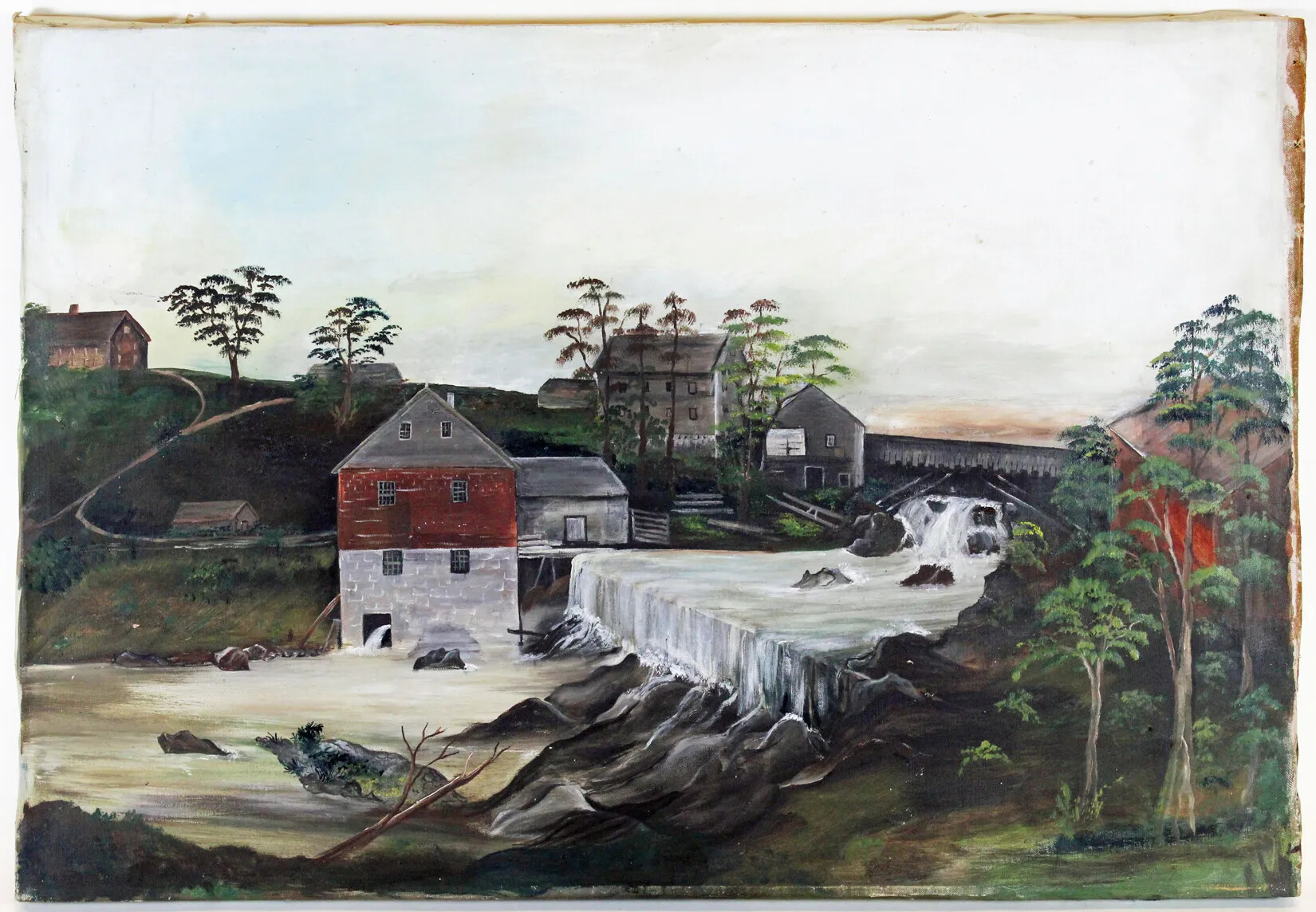
Caption:
This gristmill was located on Oliverian Falls in Haverhill, New Hampshire. A gristmill is a building next to a river that uses water power to move large stones that grind grain into flour. Oliverian Falls is on Oliverian Brook, which flows into the Connecticut River. The town of Haverhill was founded in 1763 and the gristmill was built in 1764. According to the charters for the towns that were founded at this time, settlers had to build a meeting house, gristmill, and sawmill in order to keep the land for their town. This painting of Haverhill's gristmill was made around 1870. The mill was destroyed by a flood in 1927.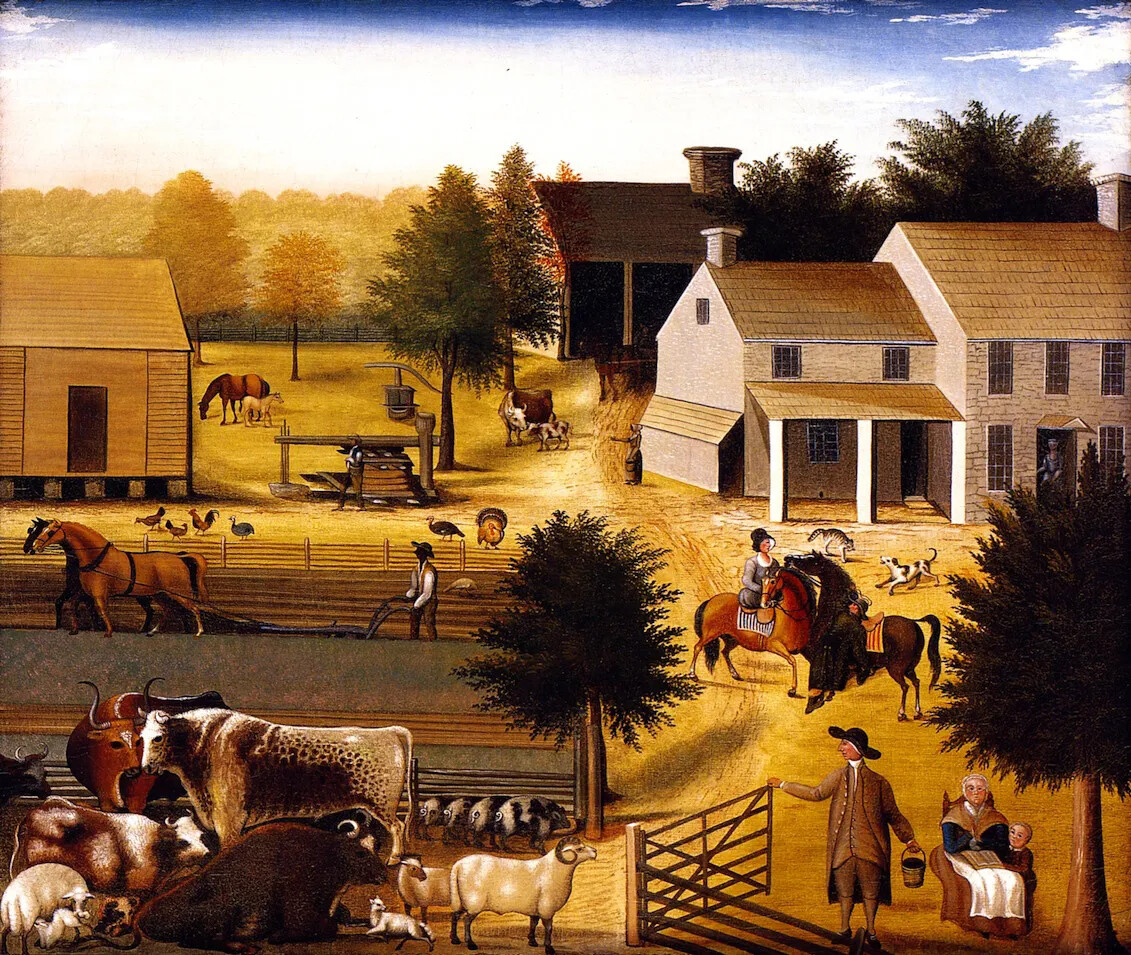
Caption:
This painting shows a typical family farm in the late 1700s. Notice all the different activities the people are doing. The farm in this painting is located in Bucks County, Pennsylvania, but it is similar to New England farms during this time period.Almost everyone who settled in these New Hampshire towns was a farmer. In colonial New Hampshire, farming involved everyone in the family.
Men and older boys worked in the fields and with large animals like horses, cows, oxen, and sheep.
Women and older girls took care of the house, sewed clothing, tended the garden, prepared all the food, and watched over the children.
Even very young children had important jobs to do on a farm, such as taking care of small animals like chickens or helping their mothers around the house.
Farms in New Hampshire produced many goods.
There were fields of crops, like wheat, rye, or corn.
There were orchards of apples and pears.
There were lots of farm animals to produce meat, leather, and other goods like wool (from sheep) or eggs (from chickens).
Farm families had gardens to grow all kinds of vegetables, like beans, squash, and corn.
They hunted and fished to provide food for their families.
They also gathered wild fruit and berries.
They kept bee hives to produce honey and made maple syrup from tree sap.
Farming was hard work in New Hampshire because the soil is rocky and the growing season is short. Most farmers did well, though. They produced enough to support their families and often had some goods left over to barter with their neighbors or sell at market.
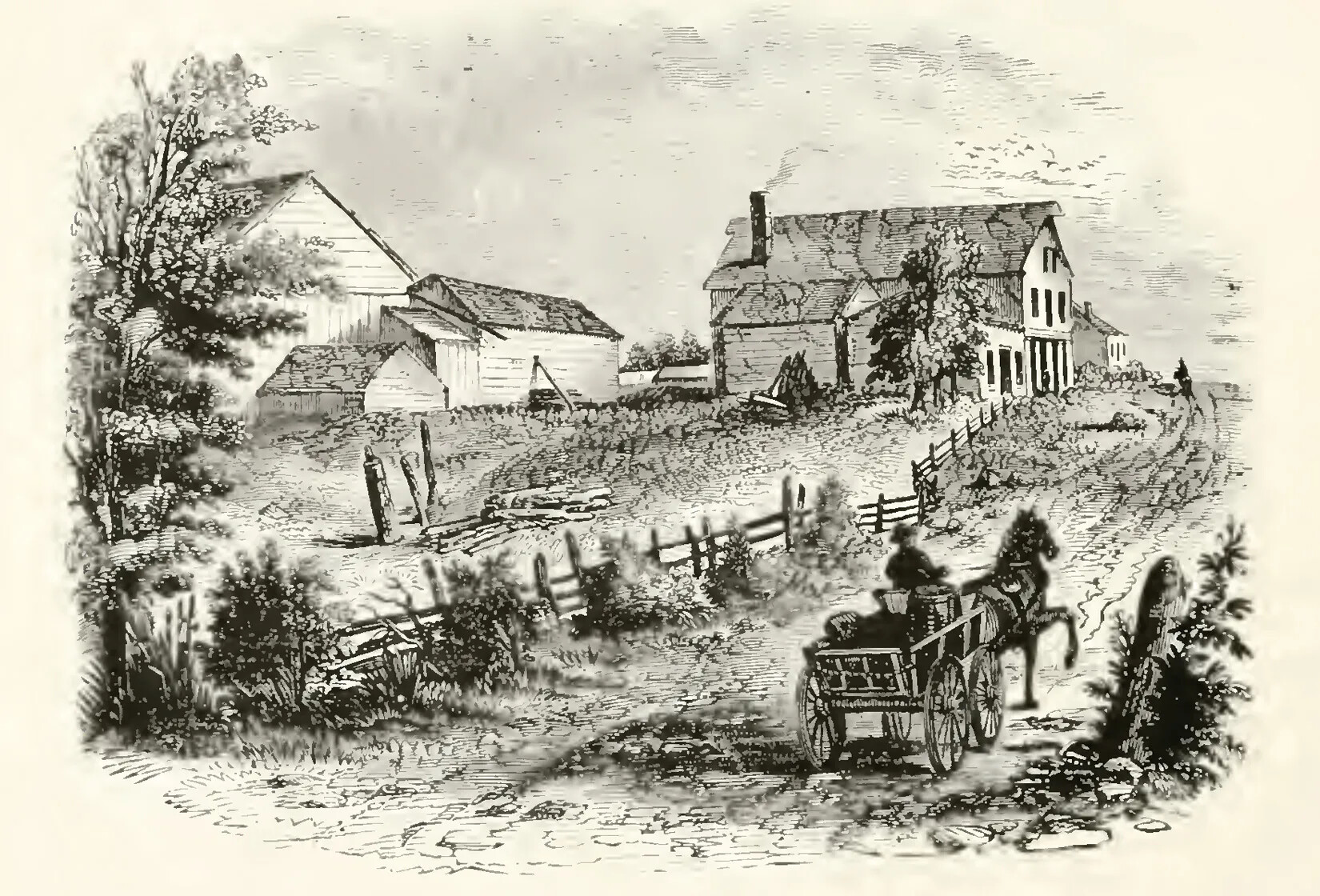
Caption:
This book illustration shows what a colonial farm would have looked like in the 1760s.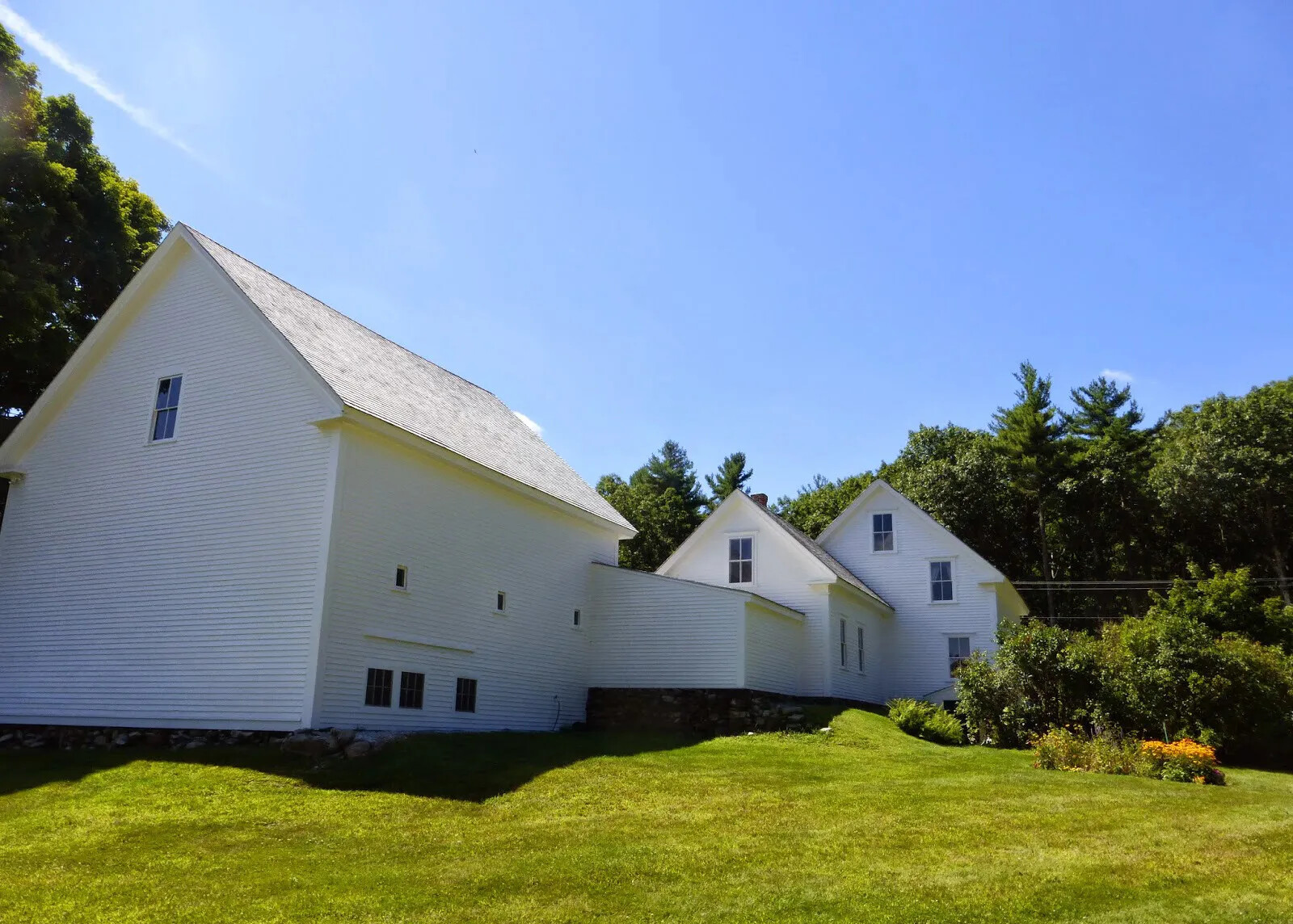
Caption:
This picture shows a connected farm. This type of housing style was popular on New England farms in the late 1700s and 1800s. Most farms started off with a small house but then added to it as the farm produced more goods. Farm families who were doing well built a bigger house onto the small house. Sometimes they also built a room that linked the house to the barn. This was called a connected farm because the different parts of the house are connected together. This was known as "big house, little house, back house, barn." This connected farm in Derry, New Hampshire, was built in the 1880s and later owned by the Frost family. A famous writer, Robert Frost, lived there with his family from 1900 to 1911.Most New Hampshire farms started off with a small house but then added to it as the farm produced more goods. Farm families who were doing well built a bigger house at the back of the small house or built a room that linked the house to the barn. These types of buildings are called connected houses because the different parts of the house are connected together.
For most people, their lives were focused on their farms and their towns. There were not very many roads in the colonial period, so it was hard to travel very far, and it took a long time to get anywhere. Most people spent their time with their own families or with other families who lived nearby. The whole town came together for town meeting once or twice a year, and they came together for church services, which were often once a week.
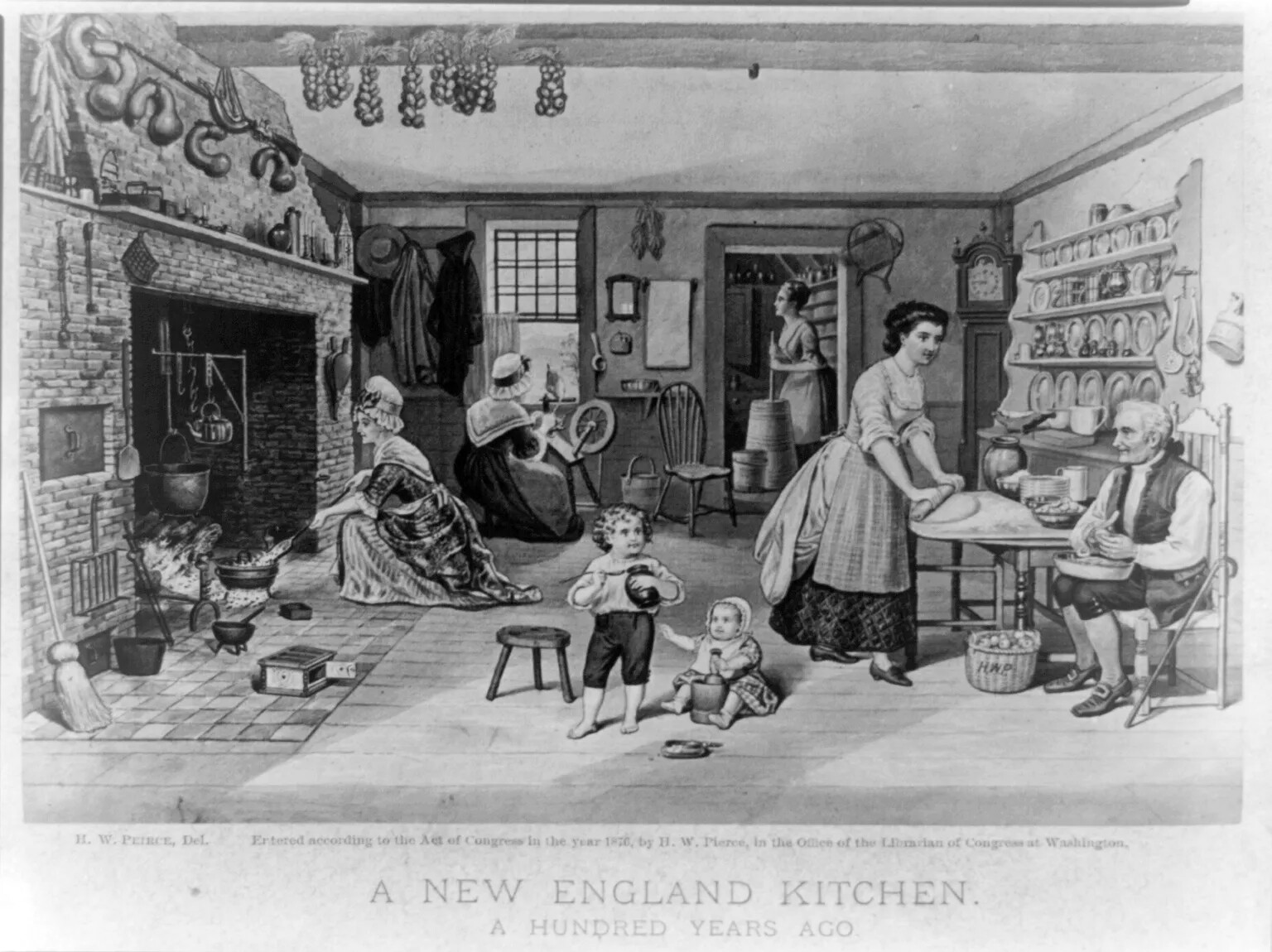
Caption:
New Hampshire farm families in the late 1700s and early 1800s were focused on their farms and their towns. The kitchen was the center of the home. People didn't have family rooms or living rooms like many houses have today. The kitchen fireplace, or hearth, provided heat for the house. It was also where the women cooked all the meals. What kinds of other work are the different family members doing in this picture?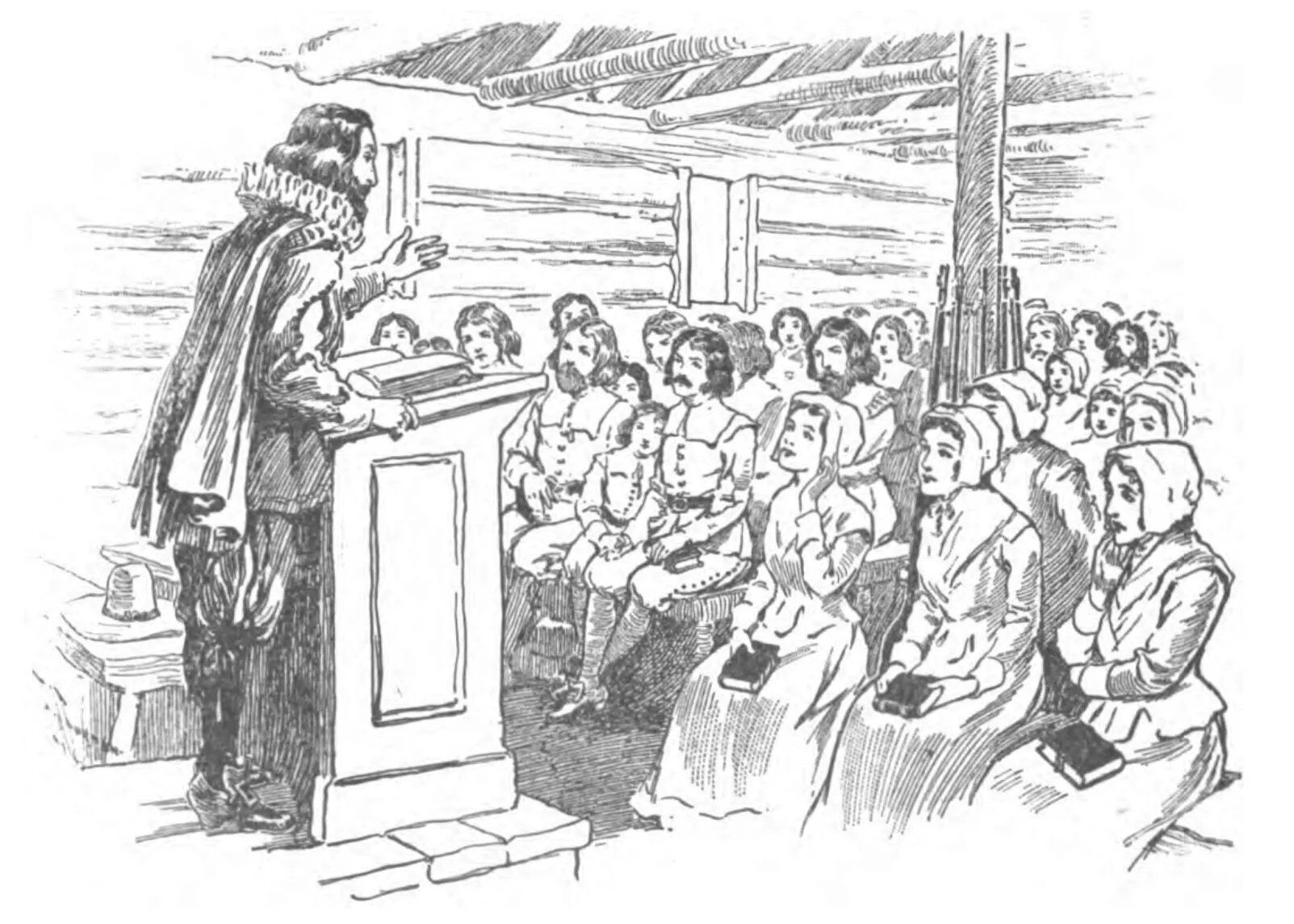
Caption:
Religion was important to the early settlers. Most colonists attended church every Sunday. Usually a town's meeting house was used for town meetings and other town business, church services, and school.Religion played a big role in people’s lives in the 18th century. The townspeople paid taxes for a minister to live in the town and conduct church services. On Sundays, church services often lasted all day, with one service in the morning and then another service in the afternoon. Since the meeting house wasn’t heated, it could get very cold for people attending services in the winter.
The town’s minister often served as the schoolmaster as well. Children spent much less time in school in the 18th century because they had to work on their families’ farms. Sometimes, kids would only attend school for 8 or 10 weeks a year!
Massachusetts and New Hampshire
How did New Hampshire settle its arguments with Massachusetts?
During the colonial period, New Hampshire and Massachusetts had a lot in common. In fact, many of New Hampshire’s early settlers came from Massachusetts. In the 1670s and 1680s, New Hampshire was even part of Massachusetts instead of being its own colony.
By the early 1700s, the two colonies were separate again, and each colony had its own legislature, or form of government. New Hampshire and Massachusetts shared a governor, though. One person was the governor for both colonies at the same time.
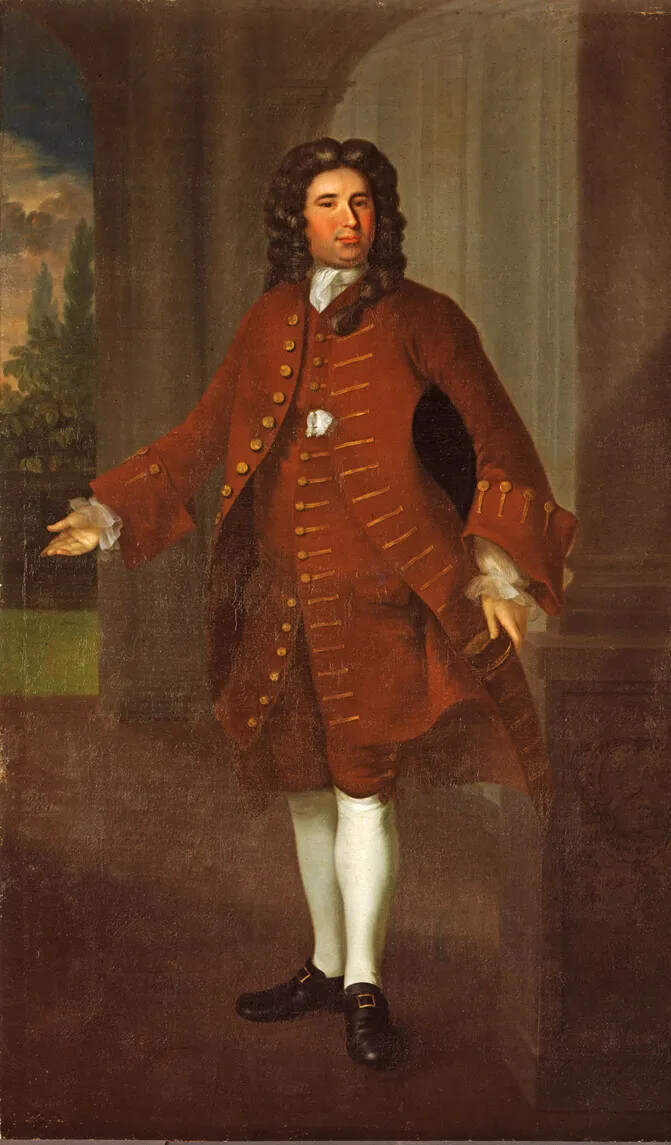
Caption:
John Wentworth was the lieutenant governor for the province of New Hampshire from 1717 to 1730. During this time, Massachusetts and New Hampshire shared a governor and lieutenant governor. Usually the lieutenant governor focused on New Hampshire and the governor took care of things in Massachusetts. Wentworth was from a family that had emigrated to New Hampshire in the 1630s. When the English king decided to let New Hampshire have its own governor, he chose John Wentworth's son, Benning Wentworth, to be the first royal governor. His grandson, also named John Wentworth, was the governor of New Hampshire in the time leading up to the American Revolution.Massachusetts also claimed that most of southern New Hampshire was really part of Massachusetts. In the 1720s and 1730s, the Massachusetts government settled its own towns in New Hampshire and gave land to Massachusetts people who were willing to move there. A lot of people were confused about where the border was between the two colonies and who had the right to give them the land they needed to settle and start a farm.
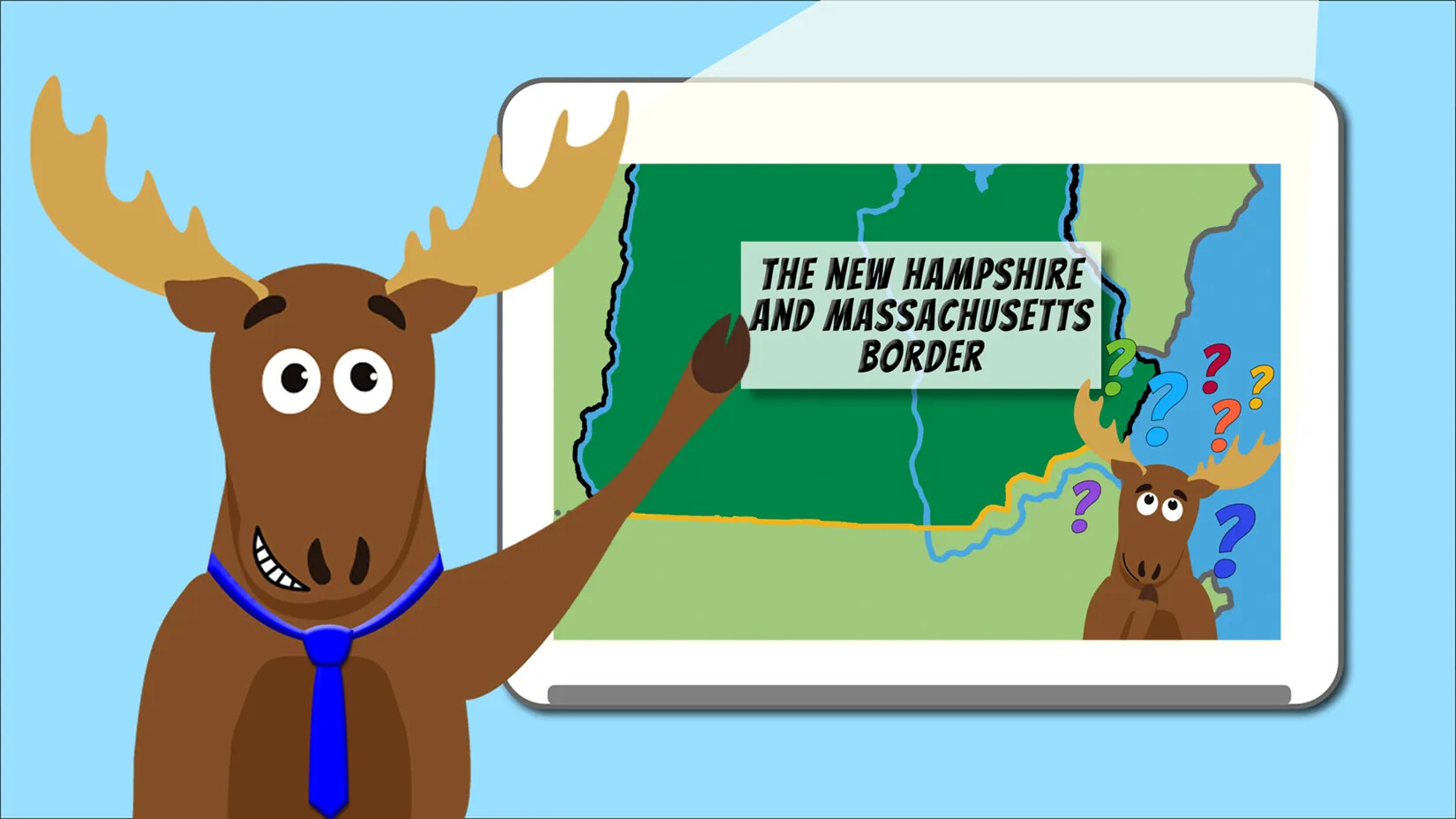
Mason Explains: The New Hampshire and Massachusetts Border
Geography matters!
Once New Hampshire’s southern border was set, the people of New Hampshire pushed the British government to give them their own governor. They didn’t want to share a governor with Massachusetts anymore because the governor usually didn’t pay much attention to New Hampshire.
In 1740, the British king named a new governor just for New Hampshire. His name was Benning Wentworth. His family had lived in New Hampshire for a long time and played a big role in New Hampshire’s colonial government. Benning Wentworth was New Hampshire’s first governor.
Caption:
Benning Wentworth was New Hampshire’s first colonial governor. His family were wealthy merchants who lived in Portsmouth and were also political leaders. In 1740, the king of England decided that New Hampshire should have its own governor. Up until then, New Hampshire shared a governor with Massachusetts. The king chose Benning Wentworth to be New Hampshire’s governor. While he was governor, Wentworth helped to establish a lot of towns in New Hampshire. He made money by selling land throughout New Hampshire, and he gave a lot of land and government jobs to his relatives. But he also helped to make sure that the new towns were self-sufficient and governed themselves through town meetings. Eventually, the colonists in New Hampshire got tired of how Benning Wentworth and his family kept getting richer and more powerful. He also got in trouble for selling land that actually belonged to New York, so he had to resign. His nephew, John Wentworth, became the next colonial governor.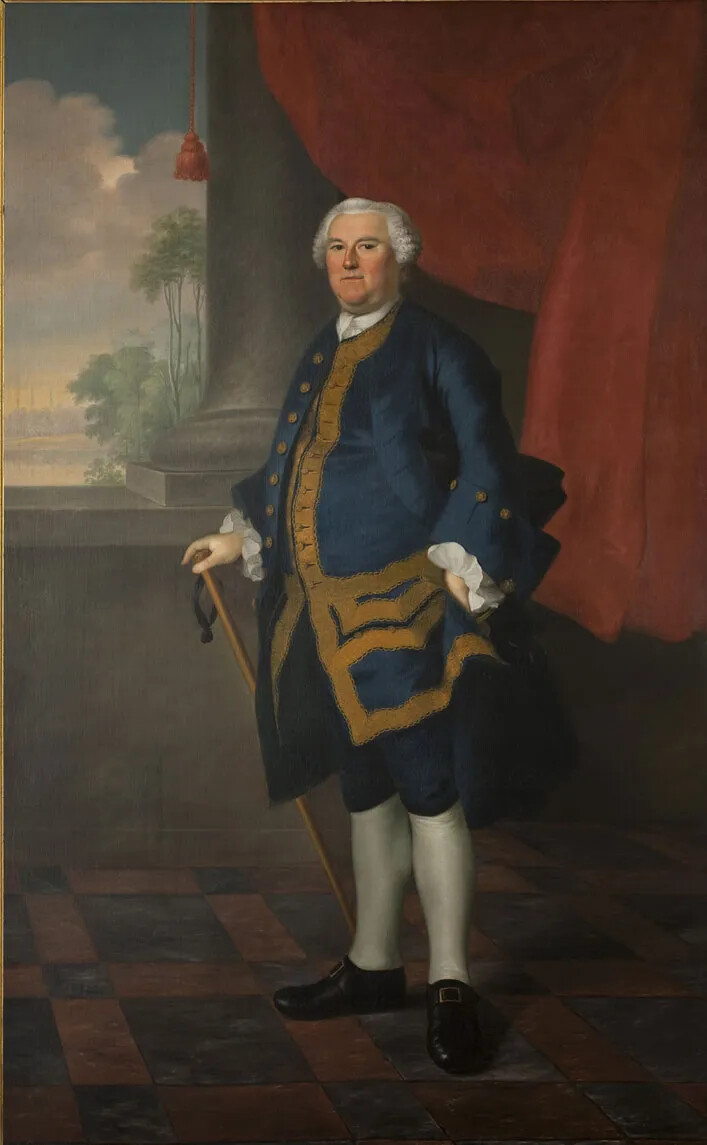
Caption:
Benning Wentworth was the royal governor of New Hampshire from 1740 to 1766. He was appointed by the king of England, and his job was to be in charge of the colony and make sure all the laws were followed. He had to share power with an Assembly, which was made up of elected representatives from New Hampshire towns.Caption:
When New Hampshire was first founded, it shared a government with Massachusetts. They both had the same governor, and at one point, there was even talk about making all of New Hampshire a county in Massachusetts! Most people living in New Hampshire did not want to be part of Massachusetts, and they asked King George II of England to keep them separate and give them their own governor. The king agreed and appointed Benning Wentworth the governor of New Hampshire. Wentworth was from an old New Hampshire family, and under his rule, New Hampshire became completely separate from Massachusetts.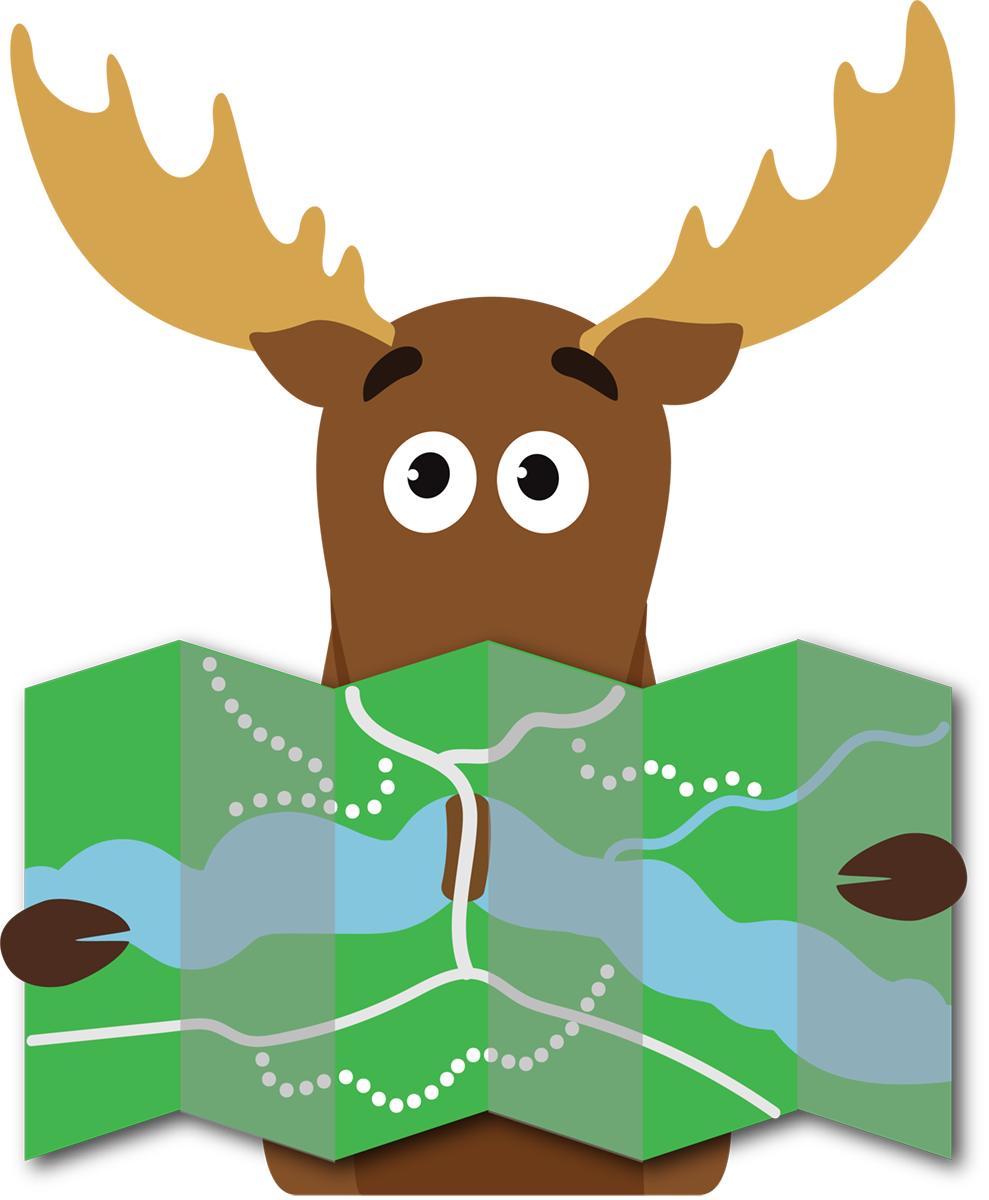
Once all these arguments with Massachusetts were settled, even more people started to move to New Hampshire. In fact, New Hampshire’s population went from just 9,000 people in 1720 to 60,000 people in 1770. New Hampshire grew faster during these decades than it did at any other time in its history. More than 150 towns had been settled in New Hampshire by 1770.
In fact, New Hampshire’s population had grown so big that the government decided to create counties to help organize them. Five counties were established in New Hampshire in 1769. Because New Hampshire was still a British colony at the time, all five counties were named after people or places in Great Britain. The counties were called Cheshire, Grafton, Hillsborough, Rockingham, and Strafford. You might live in one of those counties today!
Most of the government in New Hampshire was still done at the town level, though. Local government allowed people the most control over how they lived, which is still a New Hampshire tradition in our own times.
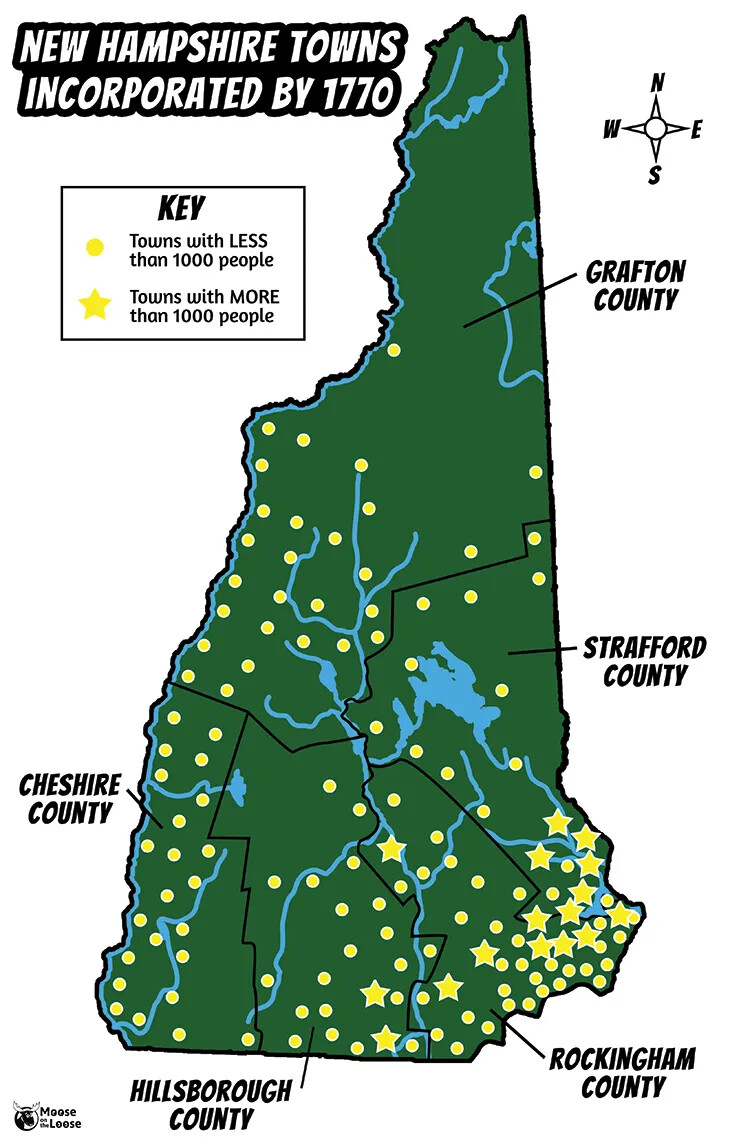
Caption:
This map shows all of the New Hampshire towns founded by settlers up to 1770, just before the American Revolution. It also shows the five counties in New Hampshire at that time. As the population grew, more counties were added. Today there are 10 counties in New Hampshire.Let's Review!
What are the big ideas in this section?
Masonian Proprietors
In the 1740s, a group of Portsmouth merchants called the Masonian Proprietors owned unsettled parts of New Hampshire. They divided up the land and gave new settlers a charter to build towns. New settlers built houses, farmed the land, and came together to build a school, meeting house, and town government.
Farming Life
Most people who settled the new towns during this time were farmers. Farming involved the whole family. Men, women, and children of all ages had jobs that helped the farm. Farms produced food to eat and goods to sell like wool and maple syrup.
Building Towns Update
Most people’s lives were focused only on their farms and towns during this time. They spent their time working with their families and coming together with their neighbors for weekly church services and yearly town meetings. It was too hard to travel much beyond their towns.
NH's Growth
Most of New Hampshire’s towns were settled in the 1700s. People came north from Massachusetts and for a while, New Hampshire was even a part of Massachusetts colony. The border between the colonies was confusing for a while, but then the British king named a new governor just for New Hampshire in 1740. New Hampshire then grew so quickly it was soon divided into five counties.
The French and Indian War
How did the French and Indian War affect New Hampshire?
New Hampshire was one of many British colonies in America during the 1600s and 1700s, and Great Britain wasn’t the only European country to have colonies in North America. The French had a colony north of New Hampshire that they called New France. Today, we know it as Canada. The French also had colonies in the central and southern parts of America, along the Mississippi River and the Gulf of Mexico. Spain had colonies in the southern part of America, too.
France and Great Britain were rivals in Europe and North America. They competed with one another over everything, and they were often at war during this period. Although most of the fighting was in Europe, the people living in the French and British colonies fought each other too. In fact, it seems like Britain and France were at war almost all the time in the 1600s and 1700s.
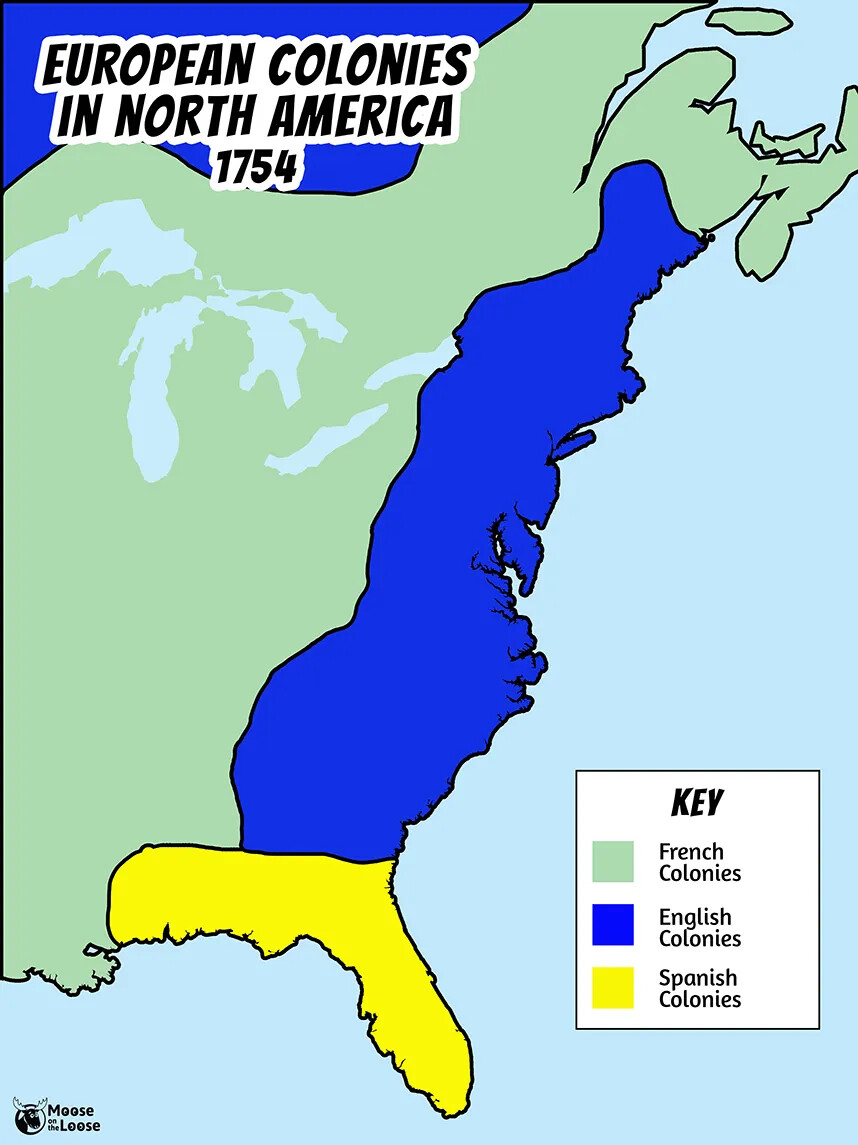
Caption:
New Hampshire was an English colony. There were lots of other English colonies in North America in the 18th century. Other European countries, like France and Spain, had colonies in North America too. When these countries fought wars with each other, the wars spilled over into North America.In 1744, the colonists built a fort on the Connecticut River that they named the Fort at Number 4. At that time, this fort was the British outpost that was farthest north, so it was an important fort for the British to hold. They needed to protect British settlers from the French in Canada.
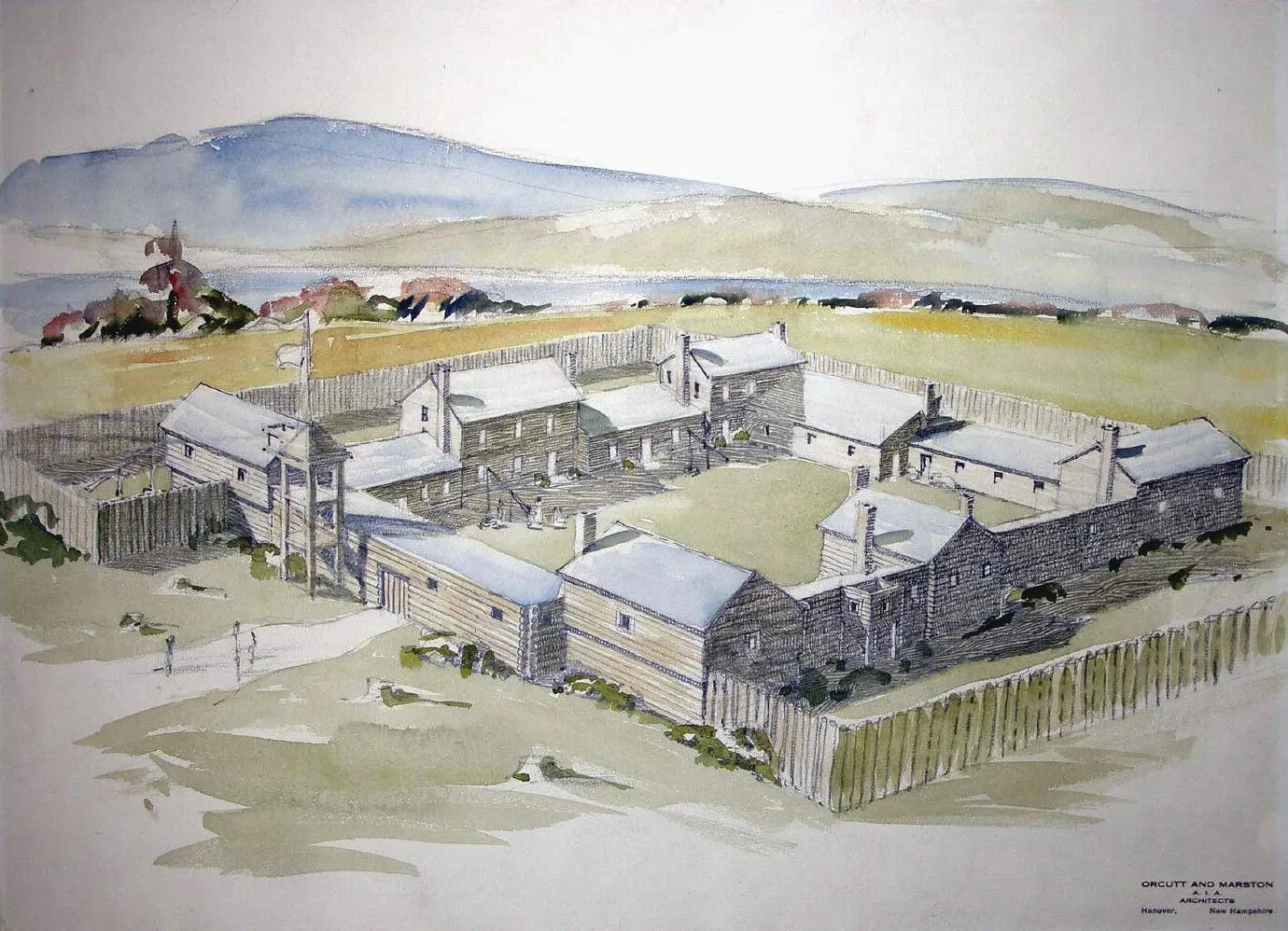
Caption:
The fort at no. (number) 4 was built in 1744 to protect New Hampshire settlers from attacks by indigenous people and their French allies. At the time it was called no. 4 because it was the fourth land grant sold by the Massachusetts government in that area. Now it is called Charlestown, New Hampshire. There was a lot of tension between English settlers and indigenous people during the 18th century. As settlers spread further west, they took more and more land where the indigenous people had lived for thousands of years. Many indigenous groups joined with the French to try to push the English out. The fort at no. 4 was the northernmost British fort, so it was very important. Many soldiers were stationed there during the French and Indian War. This picture is from the 20th century. It was made by architects working to rebuild the fort. It is now a historic site that you can visit!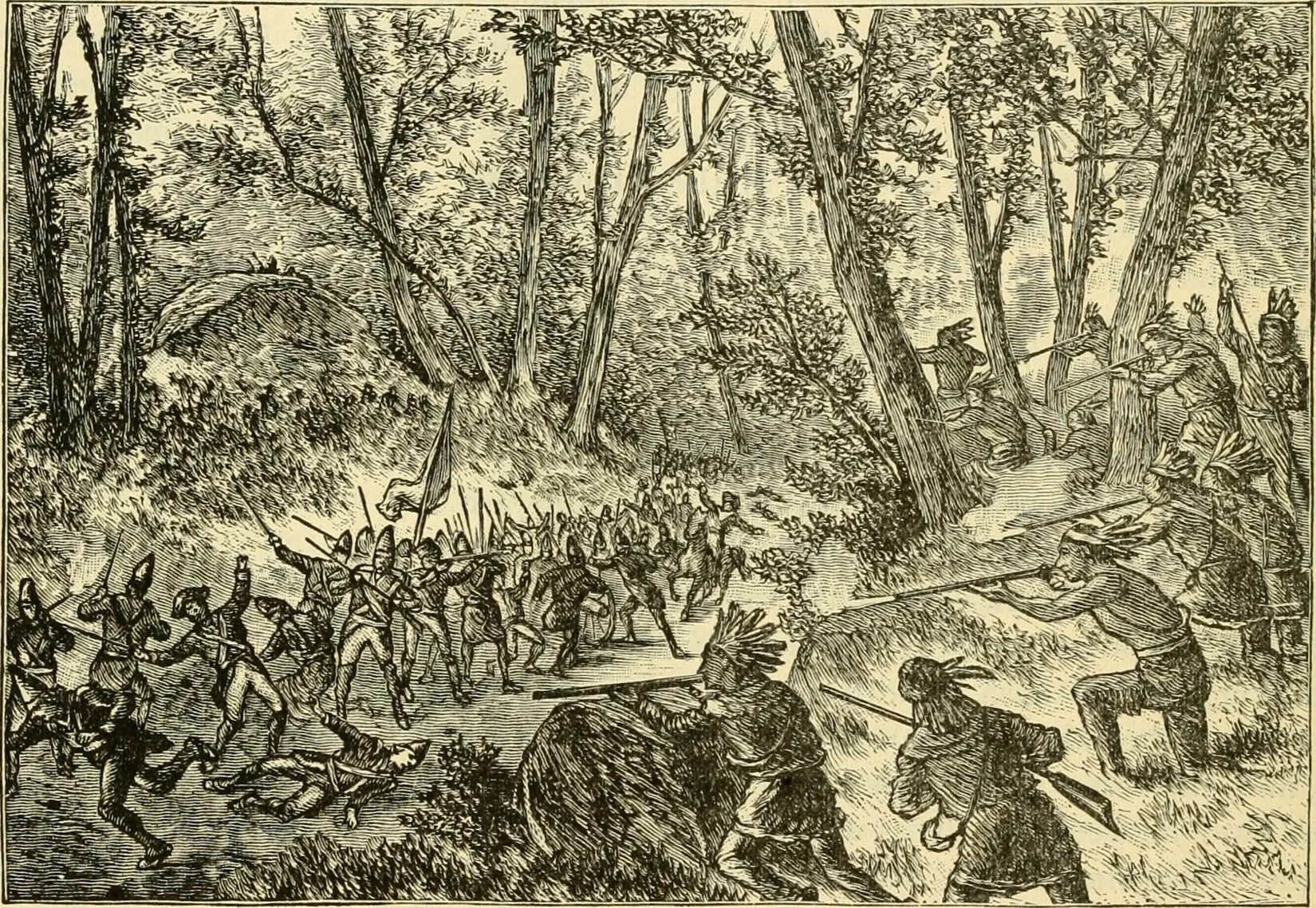
Caption:
This book illustration shows an important battle in the French and Indian War. The French and Indian War broke out in 1754. It was one of the biggest wars between Britain and France in the 18th century. It is called the French and Indian War because the French and their indigenous allies (who were called Indians at the time) fought against the British. American colonists fought on the same side as the British. The battle in this picture took place in Pennsylvania near the Monongahela River. It was a big defeat for the British. Note that the artist drew this picture many years after the battle took place.In 1754, another war broke out between the British and the French. This war ended up being one of the biggest wars between the two countries in the 18th century. The part of the war that was fought in America became known as the French and Indian War.
Most of the indigenous population (who were called Indians in colonial times) fought on the same side as the French. The American colonists fought on the same side as the British.
No battles were fought in New Hampshire during the French and Indian War, but the war had a big impact on the colony.
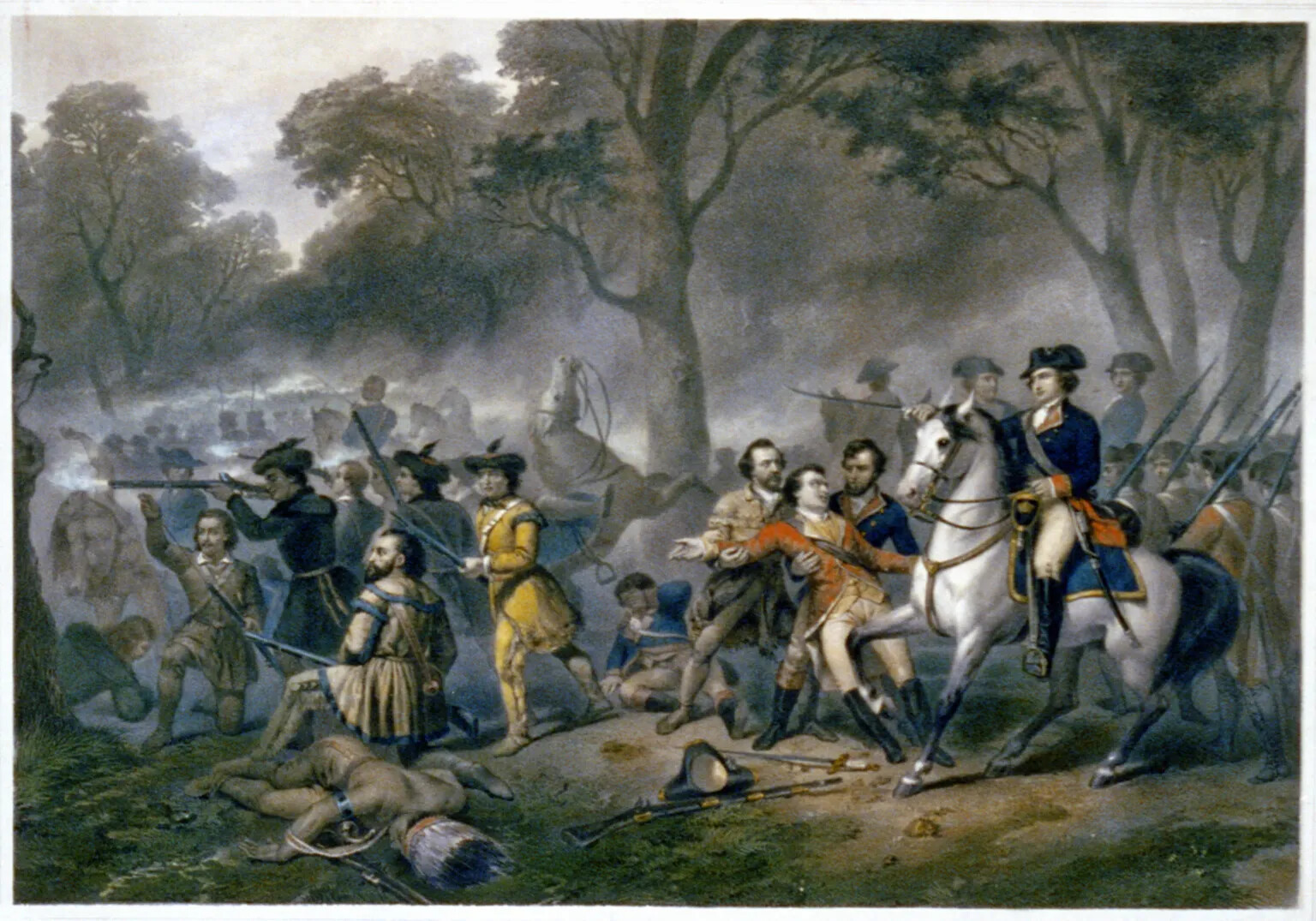
Caption:
As a young man, George Washington fought as a British soldier during the French and Indian War. This war took place from 1754 to 1763. It was between the French and their indigenous allies (who were called Indians then) and the British. George Washington lived in Virginia, which was a British colony just like New Hampshire. He wanted a military career so he volunteered for the British army. Washington is the figure on the horse in this picture, which shows the Battle of Monongahela. This battle was a big defeat for the British. The battle took place in Pennsylvania in 1755, but this picture was made in 1834.When the French and Indian War broke out, most of the fighting was west of New Hampshire, in places like Pennsylvania and New York. The French and their Native American allies organized attacks on the British and American forces by coming down from Canada through the Hudson River Valley in New York.
The British built a number of forts in this area that needed to be defended from the French. Many New Hampshire men volunteered to serve with the colonial militia and went to these forts. They fought against the French to keep the French from moving further south.
New Hampshire’s most famous soldier during the French and Indian War was Robert Rogers. He commanded a group of New Hampshire men called Rogers’ Rangers. They were very good at moving through forests without anyone hearing or seeing them. They hid behind rocks and trees and learned how to blend into their surroundings so it was hard to spot them. Because they were so good at moving around without anyone knowing they were there, Rogers’ Rangers were scouts for the British Army.
One of the men serving in Rogers’ Rangers was a young man named John Stark. He would someday become New Hampshire’s most famous general during the American Revolution.
Caption:
Robert Rogers was New Hampshire’s most famous soldier during the French and Indian War. He commanded a group of New Hampshire men called Rogers’ Rangers. These soldiers were familiar with the forests and mountains of New Hampshire. They could blend into their surroundings without anyone hearing or seeing them. They also were good at surviving in the wilderness during all kinds of bad weather. Rogers’ Rangers even fought battles on snowshoes and ice skates. Robert Rogers wrote a book about these military strategies. Parts of this book are still used today by the U.S. Army Rangers, which are named after Rogers’ Rangers.Caption:
John Stark is one of New Hampshire’s most famous military leaders. He was born in Londonderry. He was a farmer, hunter, and trapper. As a young man he was captured by Native Americans and spent about a year living with an Abenaki family in Canada, until he was sent back to New Hampshire. When fighting broke out between the patriots and the British in 1775, he raced to Massachusetts to defend the colonies. He fought in important battles like the Battle of Bunker Hill and the Battle of Trenton, where he helped George Washington. Stark was eventually promoted to general and in 1777 he led New Hampshire troops to victory at the Battle of Bennington. This victory helped save New England from a British invasion. Stark is still known as the “Hero of Bennington.” In 1809 he wrote a letter to some of the soldiers he had served with and used the phrase: “Live free or die; death is not the greatest of evils.” Those words, “Live free or die,” later became the state motto.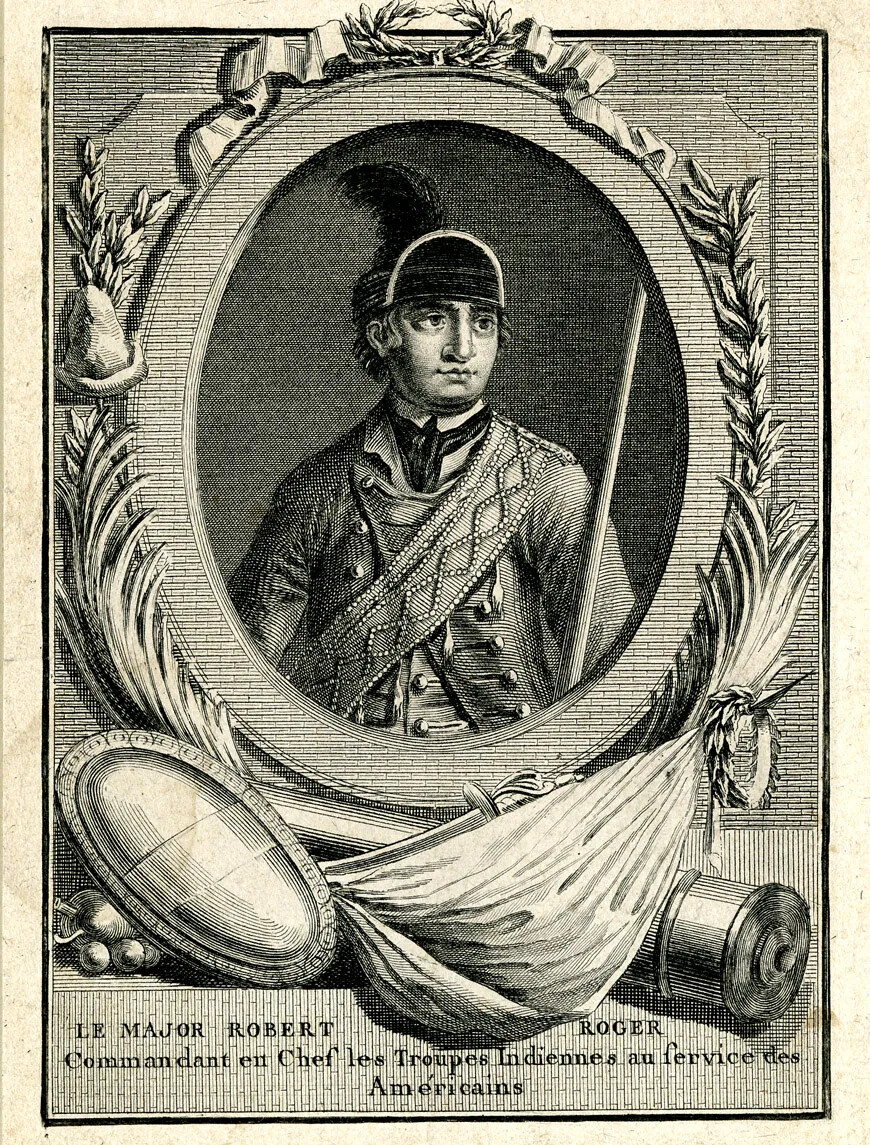
Caption:
Robert Rogers was New Hampshire's most famous soldier during the French and Indian War. He commanded a group of men called Rogers' Rangers. The Rangers were scouts for the British army during the war. They became the basis for the Army Rangers, and some of Robert Rogers' training ideas are still used today.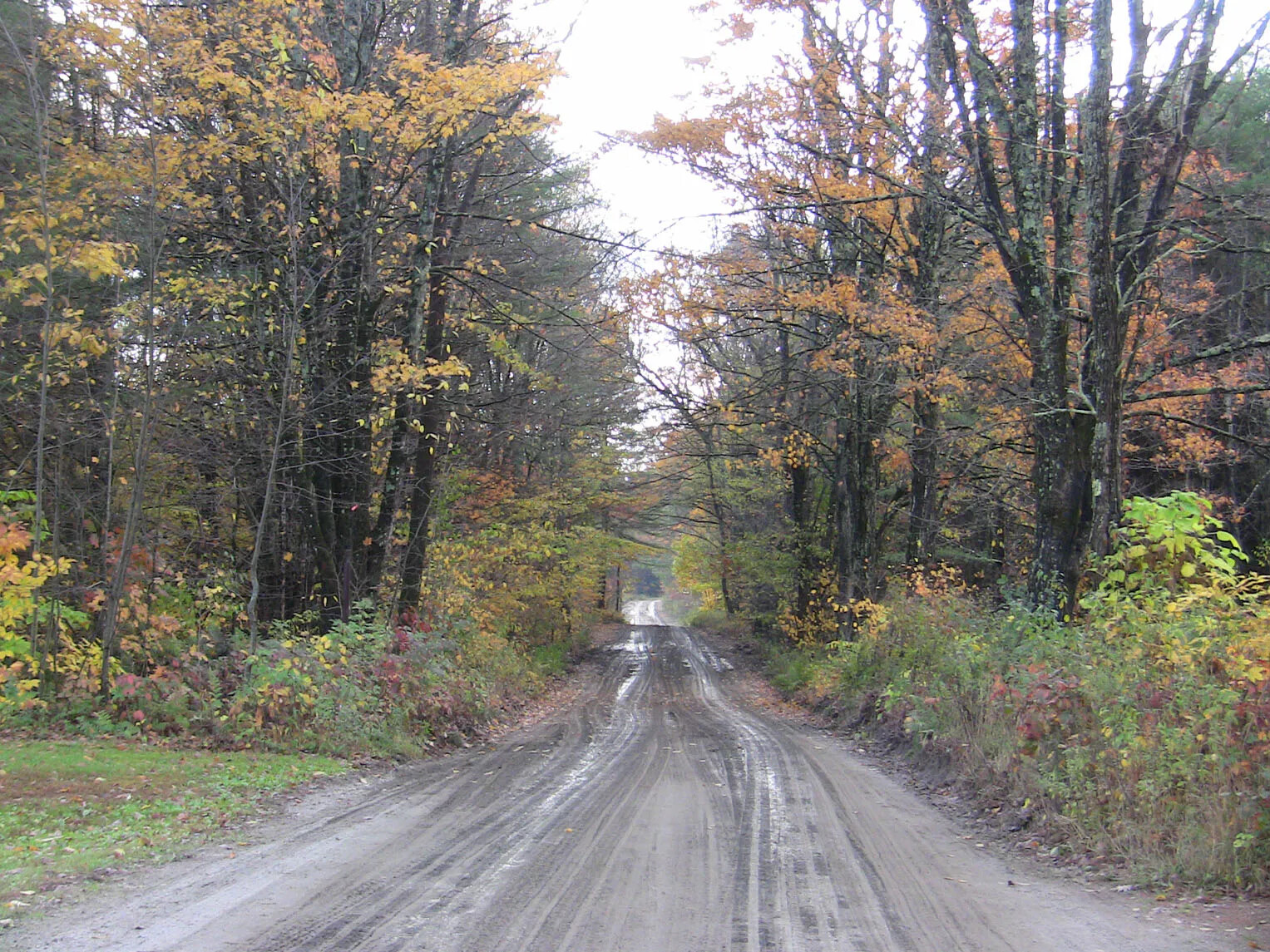
Caption:
During the French and Indian War, New Hampshire soldiers built the Crown Point Road. The British army needed a way to get from New Hampshire and Massachusetts to the Hudson River Valley in New York. Crown Point Road connected the Fort at No. 4 in Charlestown, New Hampshire, to Fort Crown Point on Lake Champlain. The soldiers had to hack their way through forest and over mountains to build the road across what is now Vermont. After the war ended, settlers built towns along the road. Parts of it still exist today. This is a photo of a piece of the Crown Point Road today, near Weathersfield, Vermont.The fighting was far away from New Hampshire during the French and Indian War, but New Hampshire had a lot of men and supplies that the British needed for the fighting in New York. To get to New York, though, New Hampshire soldiers had to travel through Vermont first. But there was no easy way to get across Vermont at that time, as there were hardly any settlers living in that area. It was mostly forests and mountains.
New Hampshire soldiers built a road from the Fort at Number 4 across Vermont to the Hudson River Valley in New York. This road was called the Crown Point Road. It took the soldiers more than a year to build the road across the Green Mountains of Vermont. When the road was finished, it helped get the men and supplies the British needed to defeat the French in New York. After the war, when many people started moving to Vermont, settlers built towns along the Crown Point Road. Parts of the road still exist in Vermont today.
The British and Americans won the French and Indian War in 1763. The French had to give New France, their colony in North America, to the British. The British gave New France a new name—Canada.
The people of New Hampshire were very happy that the French were gone from their northern border. Without the French living so close to them, the colonists felt free to explore northern New Hampshire and build settlements there.
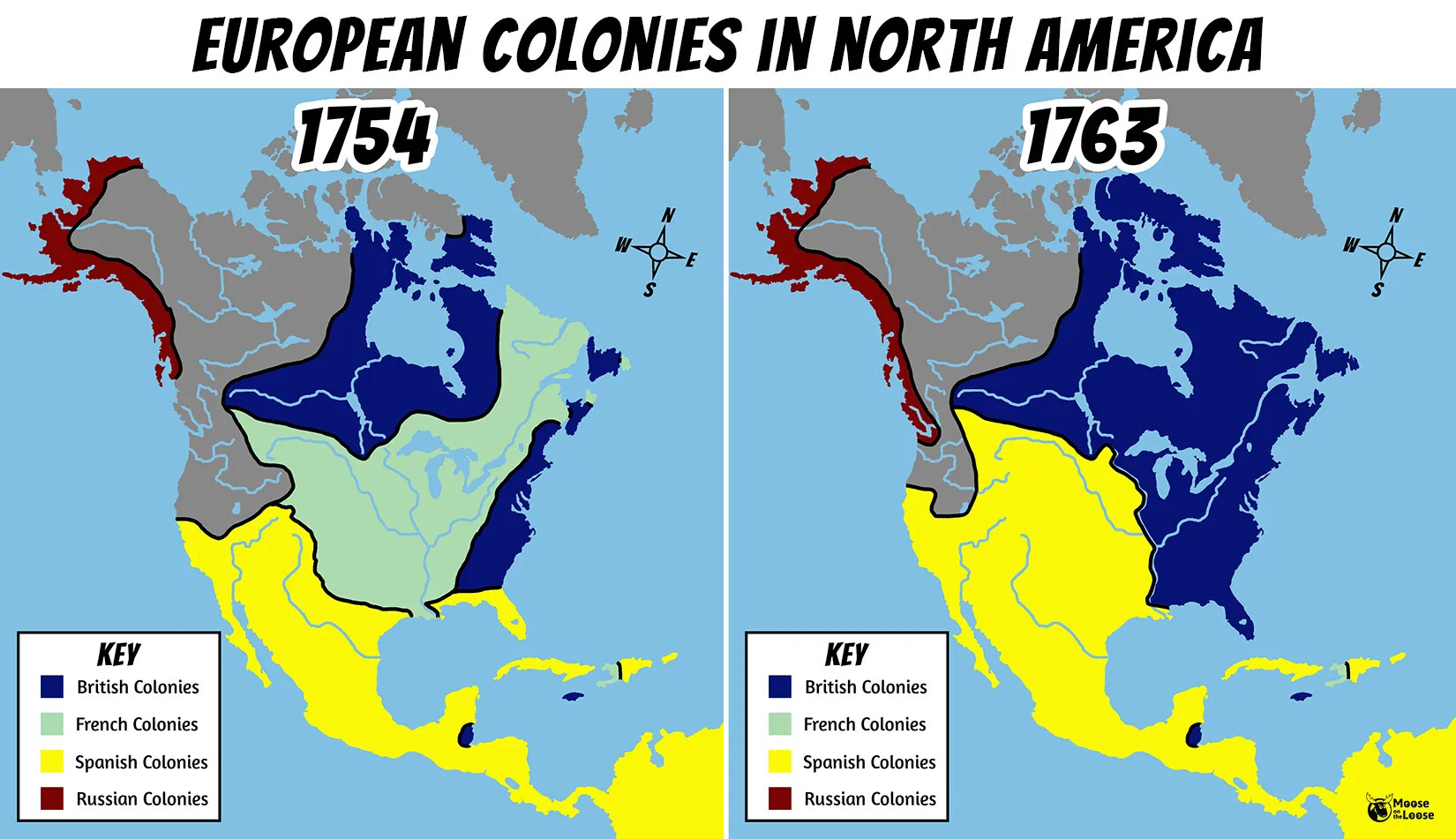
Caption:
This map shows European colonies in North America in 1754, before the French and Indian War began, and in 1763, once the war had ended. The British and Americans defeated the French in this war. Notice how the map changes. Which country or countries gained territory? Which country or countries lost territory?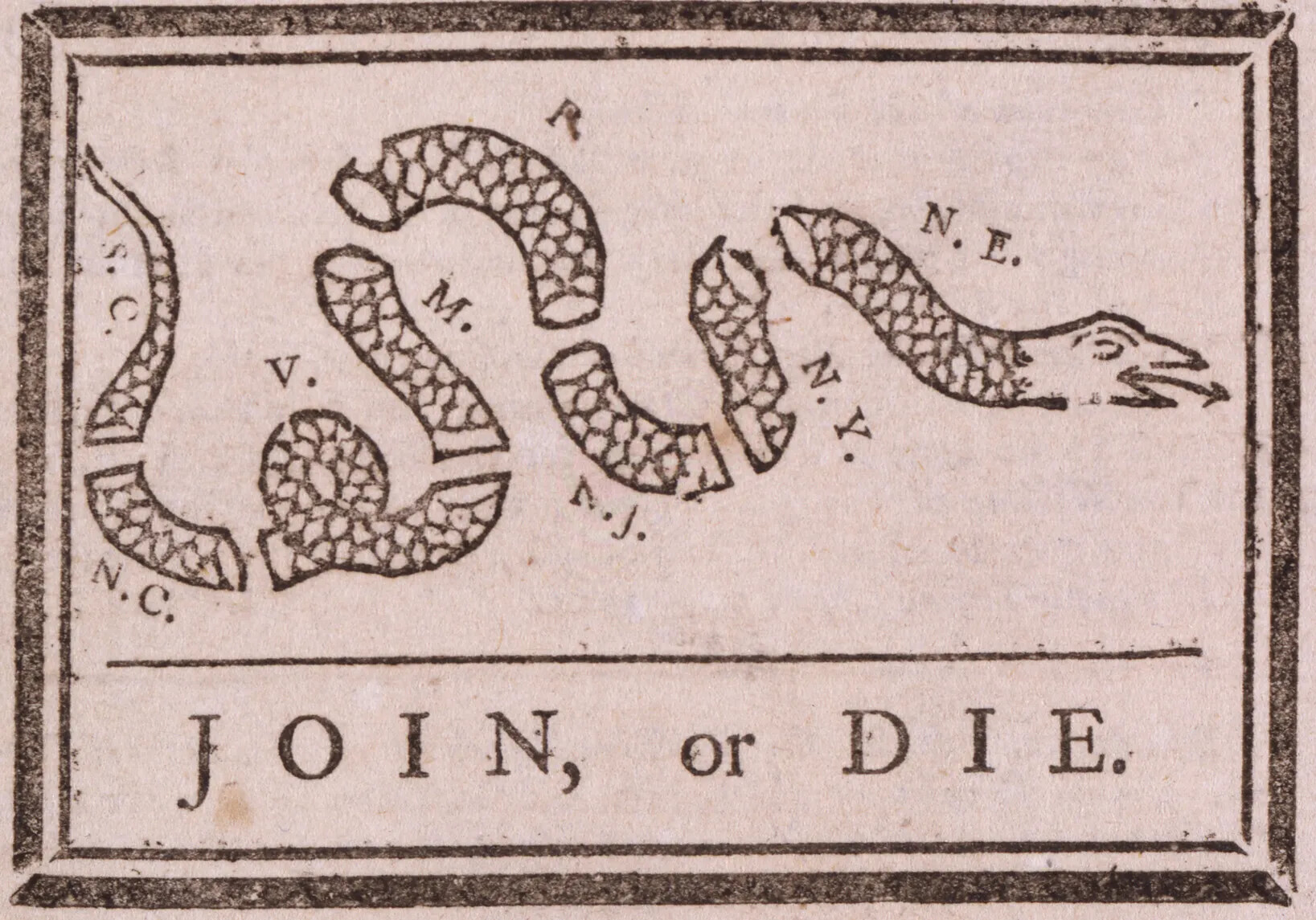
Caption:
This was the first political cartoon in America, and it was printed in newspapers from the 1750s to the 1770s to encourage colonists to join together to be stronger. Most people think that Benjamin Franklin created it, and it first appeared in his newspaper, the Pennsylvania Gazette, in 1754. The pieces of the snake represent different colonies; SC (South Carolina), NC (North Carolina), V (Virginia), M (Maryland), P (Pennsylvania,) NJ (New Jersey), NY (New York) and NE (New England, or Connecticut, Massachusetts, Rhode Island, and New Hampshire). Only Georgia and Delaware are missing.The French and Indian War also changed the way people in New Hampshire saw their colony. Before the war, they had spent almost all their time in their own towns, and they didn’t think much about the other towns in New Hampshire. Fighting the French and Indian War made people realize that they had a connection to the rest of the people living in New Hampshire.
They also started to feel a greater connection to the other colonists in North America. More than ever before, they began to see themselves as Americans.
Let's Review!
What are the big ideas in this section?
French and British Rivals
In the 1600s and 1700s, part of what is now Canada was a French colony called New France. Great Britain and France were rivals and were often at war during this period.
French and Indian War
In 1754, a war called the French and Indian War broke out between France and Great Britain. American colonists fought with the British and many indigenous peoples sided with the French. This war was one of the biggest between the two countries in the 1700s.
NH Militiamen
During the French and Indian War, men from New Hampshire served in the militia to defend the British colonies from France. New Hampshire men helped build and defend roads and forts that kept the French from moving south. Some were scouts for the British army, too, like John Stark.
Connected Together
The British and Americans won the French and Indian War in 1763. The French had to give their colony to Great Britain. The war changed how people thought because for the first time they felt connected to others outside their town. People felt connections to other people in New Hampshire and in the American colonies.
Unit 4 Student Reading
A printable version of the student reading for this unit, without pictures or graphics.
